Posted on March 12, 2021 by Administrator
1,3-Dimethylamylamine 101- a new, complete guide on DMAA (2021)!
- 1. What is DMAA?
- 2. History of 1,3-Dimethylamylamine
- 3. You can’t escape chemistry
- 4. How does DMAA work?
- 5. What the issue behind ephedra?
- 6. DMAA mental performances
- 7. How much DMAA is enough?
- 8. Is there evidence of DMAA in Geranium plants?
- 9. DMAA studies
- 10. 27 Facts That Will Make You Respect 1,3-DMAA Right Away!
ey guys! Today I am going to tell you everything you wanted to know about the DMAA but you were afraid to ask! Interested? Keep reading.
1. What is DMAA?
It gives you more than you want from your cup of coffee or energy drink.
DMAA is an aliphatic amine that is similar to other potent stimulants such as amphetamine or epherdrine. It is a powerful central nervous system stimulant - it gives you insane focus and long-lasting energy!
How does DMAA boost your energy?
DMAA is an aliphatic amine that is similar to other potent stimulants such as amphetamine or epherdrine. It is a powerful central nervous system stimulant - it gives you insane focus and long-lasting energy!

Even though all the mechanism of action for DMAA isn’t fully understood, researchers claim that it does behave as a potent stimulator of adrenaline (epinephrine), noradrenaline (norepinephrine) and dopamine in your brain.
So, when CNS signals the adrenaline glands they dump norepinephrine directly into the blood causing:
- an increase in heart rate,
- an increase in blood pressure, and
- a direct blood flow to skeletal muscle
Awesome for doing pumps, right?
Also, when released, norepinephrine triggers the release of glucocose - super effective for energy during vigorous exercise.
Your attention is increased, as well as alertness, focus, and speed of reaction time.
When dopamine kicks in, your mood elevates and you get motivated to do endless bench workouts. You feel unmeasurable euphoria, all thanks to dopamine or more precisely DMAA.
What about the half-life of DMAA?
Many people speculate about why DMAA provides such a powerful burst of energy and focus compared to let’s say caffeine.
One of the reasons is that it has a significantly longer half-life in your body than caffeine. It can stay up to 8 hours in your body, as opposed to caffeine which stays only for 4 hours.
So DMAA provides energy and focus that is long-lasting and quick-acting.
All these benefits are superlative if you are an athlete or bodybuilder. With limitless energy and enhanced congnitive ability, you will be unstoppable!
The inevitable question of safety!

Before you start using any sports supplement containing DMAA, you might get hesistant to try it out, because there is a general idea that DMAA isn’t safe.
But, if you are healthy and fit, and you always but always follow the recommended dosage you are good to go.
Do you want to find out when DMAA was introduced?
Read the following chapter.
2. The history of DMAA
Maybe you’ve already heard of the early beginning of DMAA or maybe not, but the real question here is:
How did DMAA start to be a sports supplement?
Let’s start by saying that the first recorded use of this original trademark was in 1948. The trademark was granted to the giant pharmaceutical corporation called Eli Lilly and Company and it was called Forthane. It was used for the treatment of nasal decongestion as a vasoconstrictor preparation.
A nasal decongestant is a sort of pharmaceutical drug that is used to reduce nasal congestion in the upper respiratory tract. You get nasal congestion because the membranes that are lining the nose are swollen because of inflamed nasal vessels. The bottom line, you have trouble breathing through your nose because maybe you caught the flu.
Anyway, DMAA was withdrawn from the market in the ‘80s but reintroduced again by an American chemist as an ingredient of sports supplement. It was on the market under the name Geranamine™.
Next, it was promoted as an ergogenic aid and hit the roof of popularity especially as a weight loss and pre-workout product within the bodybuilding market.
Interesting Fact: Between 2010 and 2012, around 200 different products that included DMAA were manufactured.
DMAA has many synonyms:
Methylhexaneamine, methylhexamine, geranamine, geranium extract, geranium oil, 2-amino-4-methylhexane, dimethylamylamine, 1,3-dimethylamylamine, 1,3-DMAA, 1,3-dimethylpentylamine, 4-methyl-2-hexanamine, 4-methyl-2-hexylamine.
Next time you read about ingredients on your sports supplement leaflet, you won’t get confused!
Now you might ask:
What the heck is an ergogenic aid?
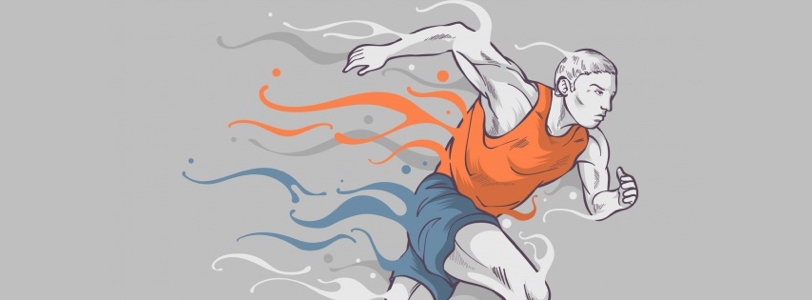
Simply put, ergogenic aid tends to boost work. They can be nutritional, mechanical, pharmacological, psychological, and physiological tools that athletes use to boost energy, performance, and recovery.
Common ergogenic aids are dried adrenalin glands, bee pollen, caffeine, amino acids, creatinine, protein powders, and others.
Although they are used both by males and females, traditionally they are more popular by male athletes.
Let’s get serious and break DMAA into bits and pieces!
Read the following chapter.
2. You can’t escape chemistry!
Maybe you hated Chemistry in school (I sure did) but in order to fully understand what is DMAA, let’s shake our neurons and talk science.
When talking about different supplements, there is a huge variety between them but they all are said to be perfect for physically active, athletes of all levels, fitness enthusiasts, bodybuilders, and similar hardcore pumps lovers.
Many of these sports supplements have the same ingredient - the molecular compound - DMAA.
It is one of the most powerful CNS stimulants known so far.
It is marketed for people who are interested in increasing their mental and physical intensity, endurance, and focus.
So, What is the chemical formula of 1,3-Dimethylamylamine?
DMAA is in a special and let’s say unique class of central nervous system stimulants because it has a peculiar molecular structure.
Its molecular formula is:
C7H17N
It shows that it is a straight-chain, 7 carbon, aliphatic amine with structural similarity to amphetamine and ephedrine.
Let’s dive deeper and break the formula.
C7 means that it has 7 carbon atoms
H17 means that it has 17 hydrogen atoms
N means that it has one nitrogen atom
Want more? OK, take a look at the ratio-structural formula:
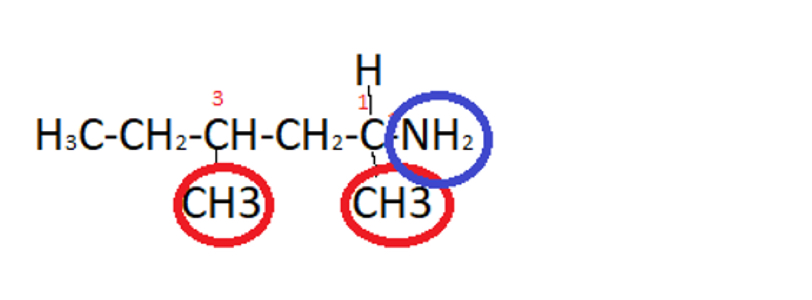
When you inspect the photo you see two red circles- they represent methyl groups that are located on the first and third carbon atom.
The ending of the name -amylamin, means that it has 5 carbon atoms if we exclude the two methyl groups (pentane) and amino because of the 2 amino groups on the first carbon atom (NH2-represented in the blue circle).
NH2-Amino groups are a group of the organic molecular compounds responsible for the chemical behavior of the whole molecule.
CH3 doesn’t exist as an individual molecule, it only appears as a part of a molecular compound.
As I mentioned at the beginning of this chapter DMAA is similar to pharmaceutical-grade amphetamine in the sense of atoms and substituents arrangement.
The difference is that DMAA doesn’t have a phenyl group represented as a ring-like structure at the end of the amphetamine structure.

But, they both have very similar properties regarding human neurotransmitter release and reuptake.
Let’s compare DMAA to Caffeine
Well to start, they are quite different.
The molecular formula of caffeine is C8H10N4O2, meaning that it consists of carbon, nitrogen, and oxygen double bonds.
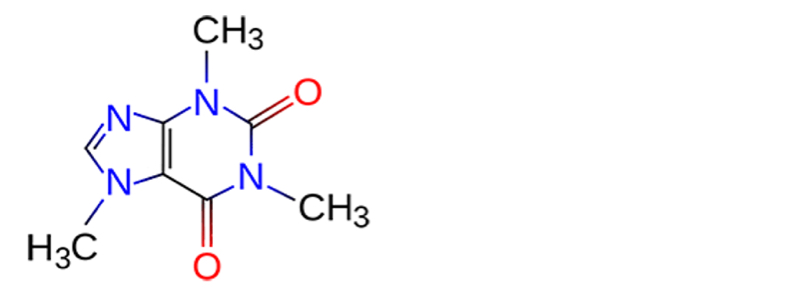
The arrangement of atoms in caffeine makes it have a relatively short half-life, just 4-6 hours, as opposed to DMAA which half-life is between 7 and 9 hours.
Now, chemically speaking, DMAA has a longer half-life because of the methyl substituent on the alpha carbon (the carbon on the NH2). This specific atomic configuration makes DMAA stay longer in the body by sterically interfering with monoamine oxidase.
DMAA acts like a monoamine oxidase inhibitor (MAOIs) - it inhibits the activity of monoamine oxidase and prevents the breakdown of monoamine neurotransmitters which makes the neurotransmitters increase their availability.
This means that DMAA interferes with the degrading of epinephrine, norepinephrine, and dopamine.
So, do you want to be in the zone longer?
You will rock with DMAA!
One last thing-aliphatic means that it is a straight-chain not circular, and it is aroma-free.
Aliphatic amines are known to cause vasoconstriction and affect the cardiovascular activity and are considered pressor amines because of these effects.
So, there you have it. DMAA explained when it comes to its molecular structure.
4. How does DMAA actually work?
As I’ve already mentioned, DMAA is a super interesting ingredient because it is effective in:
- Cognitive function
- Athletic performance
- Bodybuilding
How does DMAA work as a pre-workout?
DMAA as a pre-workout rises energy volume, lowers fatigue, lifts stamina, lifts focus, and upgrades recovery times.
DMAA pre-workout sports supplements functions include:
1. Strike on muscles

DMAA as a pre-workout increases muscle tolerance. The ingested DMAA powder acts as an adenosine receptor antagonist. This means that it lowers overall muscle pain. And, it lowers muscle recovery time for kick-ass results.
2. Focus
DMAA elevates the production and reception of norepinephrine and gives you super heightened mental focus while you exercise.
3. Perfects performance
DMMA pre-workout prepares your body for a focused workout session. As a result, it boosts your fitness performance. Also, it helps to build muscle and lose weight.
4. Lifts energy
Since DMAA triggers the release of noradrenaline, it stimulates glucose release to make your exercise intensely powerful.
5. Triggers Dopamine
DMAA increases dopamine levels for elevated mood, concentration, and focus. DMAA brings a never-ending energy supply for your best performance.
DMAA appears to be effective in:
Reflexes and memory
A study to test DMAA cognitive and recovery properties in athletics showed increased reflexes and short-term memory.
Physical Performance
DMAA powder results in better exercise performance. It improves focus and increases energy levels.
How can you intake DMAA?
DMMA can be in a form of pills, capsules, and powder. Perhaps the best form of these synthetic sports supplements is DMAA Powder.
Before using DMAA powder, always read the recommended dosage, active amount, and effects.
People are a little confused about the right dose of DMAA. There is a little confusion about the proper usage of DMAA. If you take too much of any supplement, you can develop serious health issues. So, the right dosage is paramount.
Be cautious and never take more than recommended.
DMAA pre-workouts can be packed in a bag or jar. In order to measure the dosage precisely, you will require measuring equipment.
Let’s go back and see what happens when DMAA is taken
When DMAA enters your body, it passes through the intestinal tract and it’s absorbed into the bloodstream. Going along the blood it comes to the brain and passes its barriers. It travels to the central, nervous system and BAM! It stimulates the neurotransmitters to go wild!
First, it releases adrenaline.

What is a fight-or-flight response?
Imagine a stressful or life-threatening situation, like being chased by a huge wild beast. Your heart begins to race, your hands are sweating, you are looking for an escape. Well, that’s it. That’s the primal response to saving yourself from danger.
It comes from a super important hormone - adrenaline.
How does this happen?
Well, adrenaline influences a lot of different parts of the body to prepare it for dealing with stressful situations. It triggers blood vessels to respond and start contracting which re-directs the blood to the major muscle groups, like the heart or lungs.
Also, the feeling of pain decreases, and you are able to run away from the wild beast even if you are injured. The focus is on the muscles in your legs, which can’t fail you in such a dangerous situation.
Moreover, your strength magically increases-you feel like you could lift cars.
Your awareness is sharp and your performance is over the top.
Your body will do almost everything to help you deal with stressful situations.
What about chemistry?
Adrenaline or epinephrine is a hormone that regulates visceral functions (breathing). It is produced by adrenal glands and neurons in the medulla oblongata.
In a couple of minutes when you are facing stressful situation adrenaline is released into the blood super fast, and it sends impulses to organs to prepare you to respond.
How is this connected to DMAA?
When you take your pre-workout supplements containing DMAA you get a quick spike of energy, intense focus, it amps you up and your bench workouts will be absolutely unstoppable!
You will exercise like crazy, two hours will pass, you won’t even notice and you will feel great!
Next, it releases norepinephrine (noradrenaline).

Norepinephrine is a naturally existing chemical in the body that behaves as a stress hormone and neurotransmitter (a matter that sends signals between nerve cells). It's released into the blood as a stress hormone when the brain perceives that stress is coming.
Norepinephrine or noradrenaline is a neurotransmitter or a substance that sends signals between nerve cells, located in the peripheral and central nervous system (CNS).
You might already know that our nervous system is divided into the central and peripheral parts.
Our brain and spinal cord form the CNS.

PNS connects the CNS to different tissues and organs. PNS informs our CNS about the changes in the environment through the receptors that are all around our body. In return, our CNS sends a message to our muscles for example to react when necessary.
Let’s go back to norepinephrine. It is responsible to trigger a reaction in our body, most notably to react as “flight or fight” (the reaction from the primal times - do everything to survive!)
It is produced by adrenaline glands since it is both a hormone and messenger of signals between nerve endings in our body.
It is responsible for your mood and concentration. Combined with other hormones it helps your body to respond to stress and to exercise.
Also, together with adrenaline, it increases your heart rate and blood pumping in the heart. It influences your blood pressure to rise and helps to break down the fat. It helps to increase blood sugar which gives your body more energy.
How does norepinephrine affect the brain?
When talking about the effects it has on your brain, it really acts as a superhero! It helps you to wake up, increases attention, increases focus on performing different tasks, and also helps you to store your memory. It plays an important role in your emotional display.
Norepinephrine improves alertness and energy.
Bottom line, DMAA mimics norepinephrine - you get a quick spike of energy, intense focus, it amps you up and your bench workouts will be absolutely unstoppable!
Norepinephrine and serotonin are an awesome pair, and they work great together.
Serotonin bears the name of a feel-good hormone.
But I won’t talk about serotonin now. I want to present
Dopamine-the powerful neurotransmitter
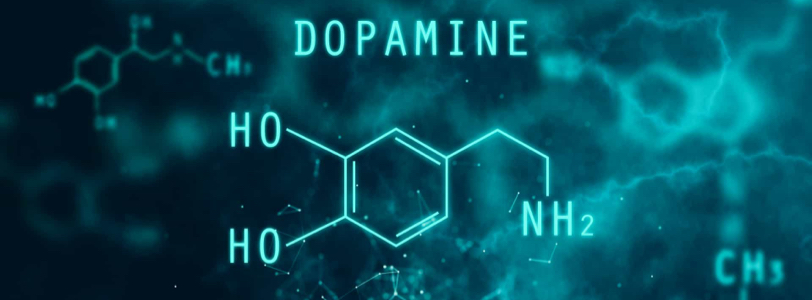
You know that feeling. You check your Instagram account or your Twitter, next you glance at Facebook posts or newspaper ads. You look at the first entry and then the next and then the next...Before you realize it, an hour has passed.
Why am I telling you this?
Well because you get addicted to texts and searching because of dopamine. You entered a dopamine loop, that follows you in almost everything you do on your smartphone.
Confused? OK let’s dive deeper.
Dopamine is created in different parts of your brain and it plays a crucial role in thinking, moving, attention, mood and motivation.
The “seeking” brain chemical is its different name-it makes you seek, desire, want and search. It is responsible for the increase of your level of arousal but also your goal-directed behavior. You get curious and want to find out more about stuff.
The other role of dopamine is to make you feel enjoyment and pleasure and seek food, sex, and others.
Bottom line is that dopamine has two systems - the liking and the seeking one. So when you want something dopamine boosts you to take action. The liking system stops you because you feel satisfied. But seeking one is stronger - it makes you seek more and more pleasure. More than you are satisfied.
And voila - you enter a dopamine loop.
You search and search, and anticipate the reward when you find what satisfies you. But, you don’t stop there - you continue this pattern, where the most important thing is actually the anticipation of the reward because that’s what releases the dopamine in your brain.
Why do we always crave two pieces of cake?
You guessed it - because of the dopamine. It makes you human. It makes you repeat pleasurable behaviors - from checking your social media networks to exercising like crazy.

What's the chemistry behind dopamine?
It is produced in two steps. First, it changes the amino acid tyrosine into dopa and then into dopamine. It is an organic compound, meaning that it contains carbon-hydrogen bonds.
As I’ve already mentioned dopamine is a neurotransmitter - a chemical that is released by neurons to send signals to other nerve cells. The brain has two different dopamine pathways- one is the motivation for rewards anticipation. So when you are expecting a reward, the level of dopamine rises in your brain. The other pathway is involved in motor control for example movement.
Since dopamine is the simplest when it comes to molecule structure, it is in the same family as epinephrine and norepinephrine.
One important fact for you - it is broken down by a set of enzymes, one of which is a monoamine oxidase (MAO).
So, when you take DMAA it mimics the effects of dopamine, meaning that your mood lifts, you get highly motivated to do your bench exercises and you work out like an unstoppable machine!

Bottom line, DMAA gives you great energy and laser focus, all together followed by a super feeling of euphoria (adrenaline + noradrenaline + dopamine =winning combo!)
5. What’s the issue behind ephedra?
I’m sure you’ve heard of this powerful plant. But, also you must have heard that it raised a lot of questions regarding safety when taken as a sports supplement!
Let’s discuss it in detail in this chapter.
The plant ephedra was very popular in the 1990s and was included in dietary supplements until the mid-2000. It was like a magic pill for getting super energy, athletic enhancement, and losing weight. But there were some safety concerns that led to its ban by FDA (the US Food and Drug Administration) in 2004.
What exactly is ephedra?
Ephedra sinica or ma huang is a plant that grows mostly in Asia, but also in some other parts of the world.
Ephedra is a low evergreen shrub with small leaves covered with scales. It was used a long time ago in India and China for treating feer, colds, coughing, headaches, wheezing and other health issues.

Let’s cover Chemistry!
A lot of different alkaloid and non-alkaloid compounds were found in different kinds of ephedra. The most popular ones are ephedrine and pseudoephedrine.
They are responsible for the stimulation and thermogenic effects of ephedra.
They stimulate the brain, constrict blood vessels (and increase blood pressure), expand bronchial tubes (which makes breathing easier), and increase heart rate.
Thermogenic properties produce heat and stimulate metabolism. Actually, ephedrine raises the basal metabolic rate.
This is super important in bodybuilding because it increases energy spending.
In more detail, basal metabolic rate is the energy that is needed to keep the body functioning when you are resting. These processes include breathing, cell growth, brain and nerve function, contraction of muscles, blood circulation, and controlling body temperature. While resting, you also burn calories and basal metabolic rates affect whether you maintain, gain or lose weight. It can bring up to about 75% of daily calorie burn, but it is all individual.
But wait, it’s not that simple.

Studies found that ephedrine alkaloids were more than 100 times likely to cause serious adverse reactions than some other supplements such as Ginko Biloba or Kava.
Some serious side effects include:
- Severe skin reactions
- Nervousness
- Irritability
- Trembling
- Dizziness
- Headache
- Insomnia
- Dehydration
- Vomiting
- Hyperthermia
More serious potential side effects include:
- Seizures
- Heart attack
- Irregular heartbeat
- Stroke
- Death
That is the reason why Ephedrine was banned by International Olympic Committeemmitee and World Anti-Doping Agency. It was also listed as a banned s by The National Football league, and the National Basketball Association.
The effects of ephedra
The plant has a lot of chemical compounds, but the biggest ephedra effects are probably caused by molecule ephedrine.
When you use ephedrine it affects your body in different ways, but most notably it increases metabolic rate and burns fat. That’s why it was a very popular ingredient in weight loss products.
Many studies that were dealing with the influence of ephedra on the body happened between the 1980s and 2000.
A few studies showed that ephedrine can increase a resting metabolic rate- the number of calories your body burns while you are resting. This could be because of the number of calories burnt by your muscles.
Ephedrine can also trigger the fat-burning process in your body.
Another study showed that the number of calories that were burnt over 24 hours was 3.5% bigger when healthy adult individuals took ephedrine as opposed to when they took the placebo.
One more study found that when obese adults went on a very-low-calorie diet, their metabolic rate dropped. But this was partially prevented by taking ephedrine.
In a few studies, ephedrine led to a weight loss of 1.5 kg, a month, as opposed to a placebo. However, long-term data on the usefulness of ephedrine for weight loss is still not out there.
Also, many studies examine the mixture of ephedrine and caffeine instead of examining just ephedrine.
So, let’s talk about that Ephedrine + Caffeine combination more.
Many studies dealing with the weight loss effects of ephedrine have combined this ingredient with caffeine.
The combo of ephedrine and caffeine seems to bring huge effects to your body as opposed to either ingredient alone.
For example, ephedrine in combo with caffeine raises metabolic rate more than ephedrine alone.
In one study in healthy overweight and obese adult individuals, the combination of 70 mg of caffeine and 24 mg of ephedra increased the metabolic rate by 8% over 2 hours, compared to placebo.
Some researchers reported that caffeine and ephedrine alone had no effects on weight loss, but their combination did produce weight loss.
Over 12 weeks, taking a combo of ephedra and caffeine 3 times a day led to a reduction of 7.9% of body fat as compared to only 1.9% with placebo.
Another 6-month study in 165 overweight and obese individuals compared a supplement containing ephedrine and caffeine to a placebo during a weight loss program.
The group taking ephedrine lost 4.3 kg of fat compared to the placebo group, which only lost 2.7 kg of fat.
In the ephedrine group, body weight and LDL (bad) cholesterol were reduced more than in the placebo group.
Overall, the available evidence indicates that ephedrine-containing products — particularly when combined with caffeine — may decrease weight.
What about the dosage and safety of ephedrine?
Doses of ephedrine used in research vary in results.
Intake of less than 20 mg a day is considered low, intake of 40–90 mg daily is considered moderate, and doses of 100–150 mg per day are considered high.
Although some positive effects on metabolism and body weight have been seen across a variety of doses, many questioned the safety of ephedrine.
Different studies have presented diverse results when it comes to the safety and side effects of this substance regarding different doses.
Some have reported no significant side effects, while others indicate a variety of side effects that even caused participants to withdraw from the studies.
More extensive reports united the results of compound studies to fully understand risks associated with ephedrine intake.
Some analysis found that products containing ephedrine and caffeine combination were connected to a two- to threefold increased risk of nausea, vomiting, heart palpitations, and psychiatric problems.
Moreover, when individual cases were inspected, some deaths, heart attacks, and psychiatric episodes were possibly connected to ephedra.
What does the law say?

While the ephedra herb and products like ma huang tea are available for purchase, there is no way you can buy dietary supplements containing ephedrine alkaloids.
Some medications that contain ephedrine can still be bought on the black market. Different countries can have different regulations when it comes to purchasing this product.
Since the products that contained ephedrine were super popular before the FDA banned it, some people are still trying to find these products.
That’s why, different dietary supplement manufacturers will advertise products for weight loss that have other ingredients that are found in ephedra, but definitely not ephedrine alkaloids.
These products might not have the safety concerns like the products with ephedrine — but they might also be not so effective.
Some countries outside the USA have prohibited products containing ephedrine, the particular regulations may differ.
Bottom line is, ephedra was kicked out, which paved the way for the DMAA reintroduction.
6. Using DMAA as a nootropic
As I mentioned before DMAA can be used as a cognitive enhancer, again because of its effects on the central nervous system.
Do you want to improve your learning capacities?
Read the following facts.
Nootropics -colloquially called smart drugs and cognitive enhancers, are supplements that are claimed to improve cognitive functions, executive functions, memory, motivation, creativity in healthy people.
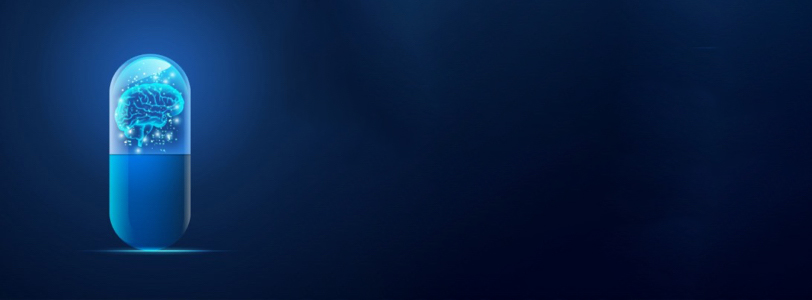
Let’s describe these cognitive functions in details
Cognitive skills
Also called cognitive functions, cognitive capacities or cognitive abilities, are connected to brain skills, needed for learning, manipulation of information, and reasoning. They represent the mechanism of how people learn, remember, solve problems and pay attention. So, they are in the range of perception, memory, attention, learning, and decision making.
Executive functions
Referred to as cognitive control, they represent the set of cognitive processes which are needed for the cognitive control of behavior. This means that you use these processes to behave in a way that will accomplish your chosen goals.
Executive functions are a part of processes such as attentional control, inhibitory control, cognitive inhibition, working memory, and cognitive flexibility.
Motivation
It’s a reason we take action. The very word is derived from the word motive-need that requires satisfaction.
Motivation is one of the biggest reasons we move forward. It is responsible for our need to master an instrument or sport.
Who has the best results of using DMAA?
Well, of course, students are in number one place. In one study 35% of college students claim to use stimulants for enhancement of academic performance rather than as a recreational drug.
I must point out here that in order to use these stimulants you must be healthy. That’s an imperative!
Systematic reviews
Followed by meta-analyses of researches, using low doses of CNS stimulants proved that these stimulants enhance cognition in healthy individuals.
More precisely, stimulants that have cognition-enhancing effects act as direct agonists (bind the receptor to produce biological answer), or indirect agonists of dopamine receptor D1- found in the prefrontal cortex.
Don’t forget - This brain region serves to orchestrate your executive functions-planning, decision-making, personality expressions, social behavior... This region influences your thoughts and actions connected to your internal goal.
Let's go back to systematic reviews.
The low dosage of DMAA improves cognitive functions (episodic memory, working memory, some aspects of attention) in healthy individuals.
Working memory has a limited capacity and holds information temporarily. It’s important for reasoning and decision-making and behavior.
Also, it improves memory consolidation which improves information recollection.
Memory consolidation is a process that stabilizes a memory after its initial acquisition.
One more thing it boosts task saliency (motivation to perform a task) and performance on time-consuming tasks that need a high degree of effort.
Motivational salience is a cognitive process in a form of attention that motivates you to go towards or away from a specific object, event or outcome. It pushes you to achieve a certain goal, spend time and energy in order to do it, and also how much risk you are willing to take while working towards that goal.
Analysis of DMAA intake

Seven participants took part in this study. It showed that DMAA had an oral clearance of 20.02 + 5 L.hr-1, an oral distribution of 236+38 L, and a terminal half-life of 8.45 + 1.9 hr. Lag Time or the delay in entering the circulation and following extravascular administration was different among participators, but the average time was 8 minutes.
The peak of DMAA was between 3-5 hours after it was taken. Heart rate, body temperature, and blood pressure were unaffected by DMAA.
Use DMAA about 30 minutes before you need to study intensely or you planned a strenuous exercise, or at any time you need a shot of intense energy.
7. How much DMAA is enough?
If thinking about what is DMAA pre-workout, it is initially super important to know how much to use it so that you don’t go overboard. Be careful not to take too much of this sports supplement, because serious health issues may appear. So, taking the correct dose is paramount.
Let’s talk about bodybuilding and burning fat.
Always read the recommendations!
So, your sports supplement containing DMAA has finally arrived! You can’t wait to try it out and get super-wired! But, don’t overlook the dosage recommended by the manufacturer and never, never, never use it on your own!
So what’s the right dosage?
The usual lower dosage is around 10 to 20 mg but gradually can rise to between 40 and 60 mg.
How do we know this?
Well of course there was a study that observed the effects of DMAA when taken a dosage of 25 mg. This resulted in a low increase in heart rate, blood pressure, and temperature. This proves that 25 mg is a base dose.
So, for your typical pre-workout dose, especially if you are a beginner, a dose of DMAA should be 10 to 25 mg. Observe how your body reacts before you consider increasing the dosage. Some DMAA pre-workouts users say that a dose between 25 mg and 75 mg is optimal. Don’t forget to use a milligram scale if you want to get accurate measures.
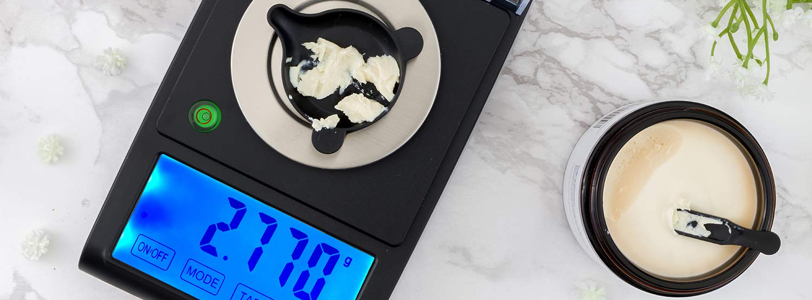
Some pre-workout supplements, that contain DMAA, fairly standardly contain 60 mg of this ingredient.
One more thing- DMAA powder has a half-life of 8 hours. A leg time is 0.14 hours - it starts to affect your body super fast.
You should take the recommended dosage about half an hour before you start your planned workout. Taking it once in a day is considered enough, you don’t need to take it more than that.
DMAA is a super effective ingredient in many supplements used by bodybuilders.
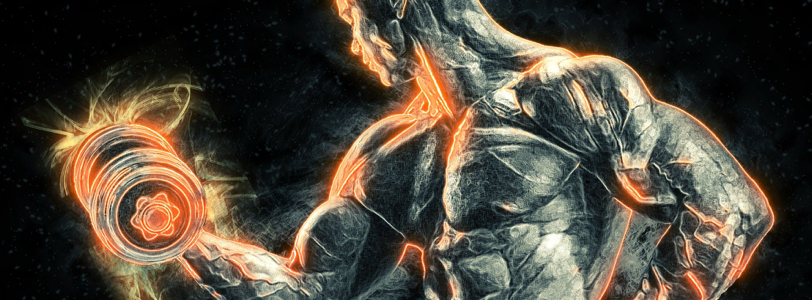
Since it is a potent central nervous system stimulant, it is highly effective as a pre-workout (PWO) supplement.
A mean increase in the systolic blood pressure of 16 mmHg was noticed with the 75 mg dosage of DMAA. Compared to caffeine, when taken 250 mg of caffeine together with 75mg of DMAA, the systolic blood pressure rose to 24 mmHg.
If you decide to take it with L-citrulline or citrulline malate, always pay attention to take the right dosage. Keep the recommended dosage of DMAA (35-50 mg) in mind.
With citrulline malate, you will get all the benefits if you combine it with 6-8 grams about an hour before the workout, without using a loading phase.
Apart from having a direct impact on burning fat, DMAA increases energy levels and supports caloric expenditure.
Do you want to get the best results?
Then think about this advice - don’t take DMAA supplements every day! Use it 2 or 3 times a week max, and plan to have a push day- it will hit you hard and you will have an epic workout!
Also as DMAA tends to build up really quickly in your body if you use it every day-you could seriously damage your health and experience adverse side effects.
Don’t do cardio on the day when you take DMAA it will just jag up your blood pressure, and you will get no real results.
But if you are doing benches, that’s another story-expect to get intense energy, intense focus, and tunnel vision!

Supplements containing DMAA are awesome pre-workouts and they absolutely deliver!
Benefits- they elevate mood and happiness and get you that lar focus and mind-blowing pumps.
You will gain a positive experience with DMAA because it is a hard-hitting fat-burning machine.
After the workout, you feel that energy pumping for days, you are in a good mood - DMAA rocks!
How does DMAA help fat loss?
Since ephedrine was banned in 2004, even though it was absolutely popular and effective in terms of fat loss, but as I said provoked some serious side effects, DMAA was reintroduced. Supplement manufacturers made it an ingredient in many dietary supplements under the trademarked name Geranamine.
The reason for this name arose from the belief that DMAA was extracted from the Geranium stems (plant).
Speaking in scientific terms one study showed that DMAA supplement induced fat oxidation and weight loss, in an eight-week trial.
Let’s talk business now!
As I said before, DMAA has structural similarities with ephedrine and amphetamine. That’s the reason it is praised as an effective appetite suppressant and central nervous system stimulant - it gives you a super energy charge to fight your enemy - fat!
How does DMAA work for you here?
Well, basically, it stimulates the release of norepinephrine in your brain and indirectly stimulates the adrenergic receptor system - it increases noradrenaline in alpha and beta receptors in your body. These receptors trigger CNS because of fear or exercises (good for you). This response dilates pupils, mobilizes energy, increases heart rate, diverts blood to skeletal muscle- physical performance is momentarily boosted!
In fat loss terms- these actions build up your metabolic rate and increase the breakdown of fats from adipose tissue for energy- this process is called lipolysis.
So, all in all, you feel a huge spike of energy, get super focus and alertness while at the same time you don’t feel hungry.
One more time- DMAA acts as a vasoconstrictor, meaning that it restricts blood flow, and leads to increased metabolic rate and ultimately fat burning and weight loss.
How to get the best results?
If you want DMAA to work for you, consider taking my advice-use it in cycles!
Why? Well, the answer might surprise you.
DMAA builds up in your body fairly quickly so to avoid increasing the dosage (remember this leads to serious side effects) use it in a period of 4-6 weeks and then stop using it for 4 weeks. This period of abstinence will help your body to re-sanitize to DMAA effects.
To wrap up!
We all know that losing fat isn’t an easy job. But with a controlled diet, intense training, and effective fat burner it is far more achievable.
So, next time you are in for losing weight quickly - do it with the help of DMAA!
8. Is there any evidence that 1,3-DMAA can be found in Geranium plants?

Allegedly, 1,3-DMAA can naturally only be found in geranium plants (Pelargonium graveolens). The presence of 1,3-DMAA in geranium plants was reported for the first time in a paper published in 1996, but this founding raised a lot of speculations. This paper was published in the Journal of Guizhou Institute of Technology by Ping et al. The concentration of DMAA was 0.66%, and it was extracted from geranium oil that was isolated from fresh stamps and leaves in P. graveolens plant harvested in the Rongjang region of Guizhou area in China.
In the following studies, it was reported that there is no evidence of DMAA in geranium plants and commercial geranium oils.
But, some studies rocked!
Is it really possible that DMAA is found naturally in this plant?
Let’s find out what the last reports said.
The studies claim that DMAA was found in geranium plant tissue and oil sourced from China.
Let’s compare source materials, analytical approaches, and extraction procedures to fully understand these studies.
Let’s cover previous studies
In 2012, the paper was published in which researchers analyzed eight different geranium oils for the presence of DMAA. In this research, two different mass spectrometric methods were used. The source of four oils was from plants in China and four from plants in Egypt. The geranium oils were extracted with the help of a multi-step procedure.

The two methods that were used are
- a high-performance liquid chromatography-electrospray ionization linear ion trap (HPLC-ESI-LIT) method
- an HPLC-electrospray ionization-triple quadrupole (HPLC-ESI-QQQ) method.
However, researchers observed no separation of 1,3-DMAA in the chromatogram presented in the supplementary.
Only one peak was seen in spiked geranium oil samples with the help of the HPLC-ESI-LIT method.
A second method that was used for the analysis of 1,3-DMAA in geranium oil demanded a step called derivatization - 1-dimethylamino-naphthalene-5-sulfonyl chloride (dansyl chloride). Derivatization using dansyl chloride provides higher sensitivity with ESI mass spectrometry methods.
Separation of the derivatized product was performed using an XB-C18 column. This column was supposed to be able to resolve the pair of derivatized 1,3-DMAA diastereomers.
But, once more just one peak was observed in the chromatogram of the spiked geranium oil sample.
Detection was done with the help of multiple reaction monitoring (MRM) of the m/z 349 to 171 transition which corresponded to losing of the primary dansyl particles. The researchers observed that the LOD refers to the cluster of the pure 1,3-DMAA and not the derivatized product, and claim that there was no 1,3-DMAA detected in any of the 8 geranium oil samples when this method was used.
What was the next study about?
In another study, researchers analyzed samples of plant materials and extracted oils from P. graveolens. They also analyzed some commercial oils, where they used GC-MS and two different LC-MS-MS methods: HPLC-ESI-QQQ and an ultra-performance liquid chromatography quadrupole time-of-flight mass spectrometry (UPLC-QTOF-MS) method.
They extracted plant materials with a 0.1 N HCl-methanol solution. Once the evaporation of the initial solvent was finished, the rest was absorbed in 1 N HCl and treated the same as all the oil samples. The efficiency of the extraction was regulated at around 35% which was on the grounds of internal standard recovery (2-amino-6-methyl heptane).
The method achieved excellent separation of the pair of 1,3-DMAA diastereomers with an estimated diastereomeric ratio of 1.13 based on measured peak heights. Although the researchers said that none of the P. graveolens essential oils or plant material, an inspection of the selected ion chromatograms for the control and spiked geranium oil samples suggests the qualitative presence of 1,3-DMAA at concentrations below 100 ppb.
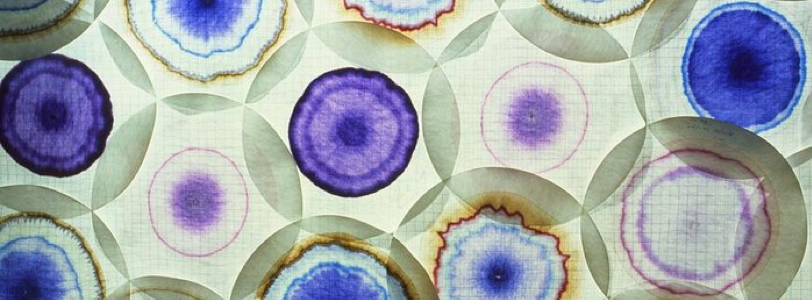
The chromatograms which appeared in the extracted plant material seemed to be similar to the chromatograms that appeared in the geranium oil. Surfaces of the chromatograms for the extracted plant material with chromatograms for the spiked geranium oil also propose the qualitative existence of 1,3-DMAA in the extracted plant material at m/z 240. The estimated diastereomeric ratio in the un-spiked plant material at m/z 240 is 1.21 was similar to the un-spiked geranium oil sample. Once more, observing at m/z 296 and 282 is inappropriate for low-level detection of 1,3-DMAA (less than 100 ppb).
In this study were also used two different LC-MS-MS techniques for analysis of the geranium oils and authenticated plant material extracts. The first method used an HPLC with a triple quadrupole mass spectrometer supplied with an ESI source (HPLC-ESI-QQQ). The extraction procedure that was applied for GC-MS analysis was also applied for HPLC-ESI-QQQ analysis.
How did this research differ?
The difference was that the researchers didn’t do the derivatization step, and the final DCM solution was evaporated until it was completely dried and absorbed in methanol for administration onto the HPLC column. Once more, the reason for the inefficient extraction might have been the process of evaporation.
Separation of the 1,3-DMAA was performed using a Synergi Hydro-RP C18 column and a binary solvent gradient using a water/acetonitrile mobile phase with each solvent containing 0.1% formic acid. The researchers detected the presence with the help of MRM of the m/z 116 to 57 and m/z 116 to 41 transitions which corresponded to losing of hydrocarbon particles. The researchers claim a LOD and LOQ of 2.5 ppb for this method, but they didn’t describe how they determined this LOD. The MRM chromatograms for un-extracted 1,3-DMAA manifested one big peak at a retention time of 4.2 minutes, which actually showed no chromatographic separation of the 1,3-DMAA diastereomers.
The researchers show representative chromatograms for oil samples, plant materials, and three different commercial products, but the transcription quality of the chromatograms is mediocre. Still, alike peaks at a retention time of 4.2 minutes are seen in the chromatograms of P. graveolens and authenticated oil of P. graveolens which suggests that the qualitative presence of 1,3-DMAA in the plant materials is possible.
A second LC-MS-MS method employed to confirm the analysis was ultra-performance liquid chromatography (UPLC) with an ESI source and quadrupole time-of-flight (QToF) mass spectrometer used for detection (UPLC-ESI-QToF). The separation was done with the help of a UPLC BEH C18 column. Detection was done with the help of selected ion monitoring at m/z = 116.1439. The researchers estimated the LOD for this method at 10 ppb, but they didn’t describe how they established this LOD. The researchers also didn’t present any chromatograms or mass spectra for any of these analyses.
Let’s cover recent studies
In one study, researchers reported that they detected DMAA in geranium plant tissues at 13 to 365 ng/g and 3 to 35.3 ng/g. They also detected it in geranium oil samples at 167 to 13,271 ng/g and 220 ng/g. The geranium plants were gathered from three parts of China (Yunnan, Jiangsu, and Guizhou) and the geranium oil from Ji'an, Jiangxi Province, China.
A method for DMAA determination was the HPLC-ESI-QQQ method, as in the previous studies. But the extraction step was different.
In the study was used a simpler approach. The extraction involved a single hexane extraction that lowers the potential of loss pathways. When it came to geranium oils, they were mixed with hexane and 0.5 M HCI and shaken really fast for 5 minutes. After that, the aqueous layer can be separated, diluted with HCl as needed, and filtered with a 0.45 μm nylon filter before it is administered in the HPLC.
For the separation of the 1,3-DMAA, it was used C18 column and an 85/15 water/acetonitrile mobile phase where the water phase contained 0.1 % formic acid. The detection was done by MRM of the m/z 116 to 57 and m/z 116 to 99 transitions, which corresponded to the loss of hydrocarbon fragments.
The researchers managed to separate 1,3-DMAA diastereomers (two peaks) with the help of this method. They noted that the 1,3-DMAA diastereomers existed in the same amount and were identical in all tested samples as well as in the standard reference.
1,3-DMAA in geranium oil samples was concentrated between 167 to 13,271 ng/g. It is still unclear, however, whether the 1000-fold difference in concentration is due to the difference in the source of the geranium plant material, type of soil, processing method, or other factors.
There was a similar study, where geranium plants were gathered during three different seasons and from three different parts of China (Changzhou, Guiyang, and Kunming). The method for the detection of DMAA was the HPLC-ESI-QQQ method.
Geranium plant materials were first extracted with 0.5 N HCI sonication.
After centrifugation, the aqueous layer was extracted once with hexane, then separated, then further diluted with HCl as necessary, and filtered with a 0.45 μm nylon filter prior to injection in the HPLC. The samples were initially analyzed with no hexane extraction step. This step was later included to lower matrix effects. Results were reported for some samples with and without the hexane extraction step. In this study, the range of the extraction efficiency of spiked geranium samples was from 54% to 107% for 1,3-DMAA.
1,3-DMAA separation was done with the help of a Kinetex C18 column and an 82/18 water/acetonitrile mobile phase, where the water phase contained 1% formic acid.
Detection was done using MRM of the m/z 116 to 57 and m/z 116 to 99.7 transitions corresponding to the loss of hydrocarbon fragments. With this method, the researchers were able to achieve method detection limits for 1,3-DMAA in the plant extract on the order of 0.6 to 3.2 μg/L (ppb). This is in accordance with a detection limit of about 20 ng/g in the plant material.
What can we say about the results?
In the end, the results were gathered in two different laboratories and they were similar. In both laboratories, subsamples from the same plant material were analyzed, with the help of a similar method that provided evidence for the existence of 1,3-DMAA in particular species of geranium from China. This proves that 1,3-DMAA varies in appearance in different species and that different seasons might affect its presence as well.
What can we conclude?
There is a lot of conflicting evidence about the natural appearance of DMAA in some species of geranium plants.
Why? Well, probably because there are differences in the sample sources, procedures for extraction, and ways of analysis.
Also, there are more than 200 different species of Pelargonium, so that’s the probable reason why some plant materials have DMAA and others don’t.
The three studies analyzed the leaves and stem from geranium plants from China and India. DMAA was found in plant materials gathered in three different areas of China -Yunnan, Jiangsu, and Guizhou.
Another study found DMAA in plants from Changzhou, China, and, at low levels, in plant materials from Guiyang, China. But, no 1,3-DMAA was found in plant materials gathered from Kunming, China.
When chromatograms were inspected, it was suggested that DMAA was present at levels below 100 ppb in some samples of plant material.
Only one study reported the separation of 1,3-DMAA into its four stereoisomers, using a GC-FID fitted with a chiral stationary phase.
In general, these studies show that 1,3-DMAA can be found naturally in some but not all geranium plants. It is more likely that the evidence for the presence of 1,3-DMAA in plant materials is found in trials performed in laboratories. In these conditions for the detection of 1,3-DMAA, extraction procedures involve fewer extraction steps, which lowers the potential for losses.
And as I mentioned before, some studies were successful in detecting 1,3-DMAA from some plant material, but not from others. All the plants, where DMAA was detected, were sourced from China, and the concentration was generally lower than 500 ppb.
9. Studies of the effects of DMAA
Interested in the studies about the effect of this powerful supplement?
Read the next chapter.
Physiological and pharmacokinetic effects of oral 1,3-DMAA intake
In this study eight men took part. They were healthy and fit, without any medical conditions. They came to the laboratory in the morning, without having eaten during the night. Their blood samples were collected before the intake of 25mg oral dose of DMAA and during the next 24 hours. Blood samples were analyzed for plasma DMAA concentration with the help of high-performance liquid chromatography-mass spectrometry. Additionally, the researchers also measured the participants’ heart rate when resting, body temperature, and blood pressure.
Pharmacokinetic analysis
DMAA plasma concentration-time was tested with the help of noncompartmental analysis in Phoenix WinNonlin software with adjustment for a lag time after oral intake.
The terminal half-life, peak concentration, lag time, time of maximum concentration, and oral clearance were tested and analyzed with a one-way repeated measures analysis of variance.
What did the results say?
The most significant result in this study was that there was a relatively low plasma concentration of DMAA when the oral dosage was 25 mg and that there were no significant physiologic effects connected to a single dose. These findings cast a light on a possible reason for the adverse outcomes connected to using DMAA when this ingredient was used in highly abusive dosages.
The data collected in this study showed that 25mg dosage of DMAA doesn’t significantly change physiological variables. However, it must be pointed out that abuse of this ingredient together with other chemicals can result in serious health issues.
When all the analyses were done, the results showed that DMAA had an oral clearance of 20.02 ± 5 L∙hr⁻¹, an oral volume of distribution of 236 ± 38 L, and a terminal half-life of 8 ± 1 hr. Also, the results showed that the lag time, which is actually the time when DMAA kicks in the circulation was different for most participants, but generally landed on 8 minutes. The peak of DMAA for all participants appeared between 3 to 5 hours after the intake.
Important fact: blood pressure, heart rate, and body temperature didn’t change a lot under the influence of DMAA.
And the conclusion?
The data collected in this study were the first to present the pharmacokinetic characteristics of DMAA when taken orally. These results show a pattern of increase across the participants, regarding the peak values, which are 15 to 30 times lower than the results from studies where DMAA intake was linked to adverse events.
The bottom line is 25 mg dose of DMAA doesn’t significantly impact resting heart rate, body temperature, and blood pressure. Also, these results could lead to speculation that the adverse outcomes connected to DMAA usage are due to transparent abuse of this ingredient.
Future research on DMAA is highly recommended.
Acute Stimulant Intake and Neurocognitive Performance

In this study, the main objective was to see the effects of supplements containing stimulants on ImPACT performance.
The imPACT is a neurocognitive test, called Immediate Post-Concussion Assessment and Cognitive Testing.
The imPACT is a computer-based test battery and it consists of 6 modules for evaluation of verbal recognition memory, attention, visual PS, numerical sequencing ability, RT, visual working memory, and learning.
Prior to this study, there was a belief that stimulants can improve neurocognitive measures.
Who participated in the study?
5 men (age = 20.6 ± 1.5 years, height = 176.3 ± 9.6 cm, mass = 76.9 ± 18.6 kg) and 7 women (age = 20.6 ± 1.1 years, height = 162.9 ± 7.8 cm, mass = 60.9 ± 8.2 kg) participated in this study. They were healthy individuals without any head injuries, attention-deficit disorder or learning disability.
Other volunteers were not included in the study because they suffered from hypertension or other cardiovascular issues, or they had a kidney, liver, or thyroid disease; seizures; diabetes; psychiatric disease; they were prescribed by doctors any sort of stimulant or monoamine oxidase inhibitor.
The participants that took part in this study were tested always on the same day and at the same time for each session. They were instructed to go to bed at the same time, the night before they were tested. Also, they had to record their diet on the first day of testing and to repeat the same diet on each following test day. This was important for excluding any possible dietary influences on arousal.
What was the intervention, and what results were gathered?
One group of subjects took the supplement - 5.5 g of Jacked 3D, which contains caffeine and 1,3-dimethylamylamine, the other one placebo, and the third was named as a control group.
The goal was to compare ImPACT composite scores for visual and verbal memory, visual-motor speed, impulse control, reaction time, and cognitive-efficiency index in all 3 groups, 30 minutes after the intake.
Results showed that the participants who took the supplement had faster reaction times (0.53 ± 0.03 seconds) compared to the placebo group (0.55 ± 0.03 seconds) and control (0.55 ± 0.03 seconds). Also in the cognitive-efficiency index, participants in the supplement intake group scored higher than participants in the other two groups.
What were the concerns?
Using DMAA supplement in this study evoked some concern for side effects. There were some reports about minor side effects in the group that took the supplement in the form of anxiety and jitters, but these effects are common when you intake stimulants.
However, there were no changes in heartbeat, diastolic blood pressure, and systolic blood pressure, in all three groups.
This proved that the dose of DMAA that was taken by the participants was within a safe range.
What was the conclusion?
When the participants ingested the stimulant 30 minutes before the testing it improved their visual processing speed, reaction time, and memory. These improvements were nominal and left the question of clinical importance. So, even though the study proved that supplements containing DMAA do enhance cognitive skills, it is still unclear whether it would affect the return -to-participation progression. Also, the participants were healthy subjects so it is not known whether this stimulant would have the same results in clinical subjects who actually suffered from a concussion.
In the end, I must point out that this study was done in order to inform the clinicians about the DMAA’s potential to enhance cognitive skills, and not to advise athletes about it.
Next study is super interesting-make sure you check it out.
Hemodynamic and Hematologic Profile of Healthy Subjects Intaking Supplements Containing 1,3-Dimethylamylamine and Caffeine
The aim of this study was to assess the hemodynamic and hematologic description of two different supplements that contained 1,3-dimethylamylamine and caffeine (and other ingredients), prior and at the end of two weeks of daily intake.
Hemodynamics represents the dynamics of blood flow. Blod flow makes sure that nutrients, oxygen, CO2, hormones, metabolic waste products are transported through the body and maintains pH, osmotic pressure, temperature, protection against microbial and mechanical harm, and cell-level metabolism.
Hematology deals with the study of the cause, treatment, prognosis, and prevention of diseases connected to blood. It involves treating diseases that affect the production of blood and its components, such as blood cells, hemoglobin, blood proteins, bone marrow, blood vessels, spleen, and the mechanism of coagulation.
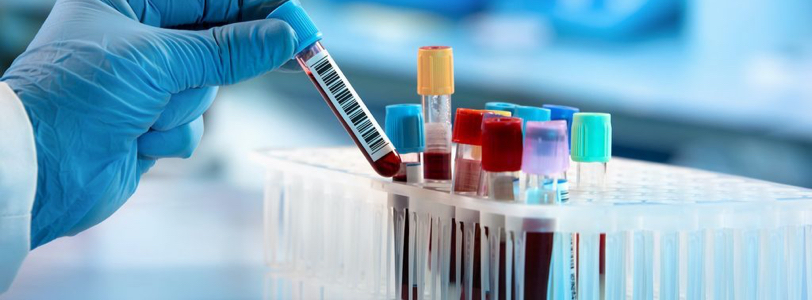
What was the Method in this study?
Participants who took part in this study were 7 men (24 ± 4, years), that took the supplement Jack3d™. and 4 men and 2 women who took the supplement OxyELITE Pro™ once a day for two weeks. Both supplements contain DMAA.
All participants were healthy, didn’t smoke cigarettes, and didn’t have any diagnosed cardiovascular or metabolic disease. They were all active individuals, performing either aerobic or anaerobic exercises for the past few years.
Their resting heart rate, systolic and diastolic blood pressure were measured on the 1st and 15th day of the study. Also, their rate pressure product was calculated.
Their blood samples after a fasting night and before the intake of the supplements. were analyzed for complete blood counts, lipid panel, and comprehensive metabolic panel.
After the blood samples collections, on the 1st and 15th day, participants took the supplements (2 servings), and their resting heart rate, diastolic and systolic blood pressure and rate pressure product were recorded at 30, 60, 90, and 120 minutes after the intake.
What did the results show?
HR, DPB, SBP, and RPP were not increased after the 14 days of treatment. Also, there were no consequential changes in measured bloodborne variables, only with the intake of Jack3d™ there was a slight increase in fasting blood glucose.
Following the acute intake of the supplements, there were no increases in HR, RPP, and DBP. SBP was increased when OxyELITE Pro™ was taken but not with Jack3d™.
When pre-intake and post-intake were compared, both supplements increased SBP, DBP, and RPP from 5% to 15%. The peak was noted after 60 or 90 minutes post -intake.
And the Conclusion?
This study found that both products (that contain DMAA and caffeine) don’t increase resting HR, SBP, DBP, or RPP when they are taken for 14 days every day. Blood tests didn’t show any significant changes in the variables, except in glucose.
The acute intake (2 hours after intake) of OxyELITE Pro™ resulted in an increase in SBP. Over the 14 days period of two servings, a day of both supplements didn’t elevate the resting HR, DBP, and RPP. Since these results were generated using two servings of the supplements, it is probable that one serving would result in lower changes.
I must point out, that more studies are needed to fully comprehend the effects of DMAA and caffeine on hemodynamic and hematologic variables.
Some other studies on DMAA include:
- 1. Back in the 50s, there was a study conducted that showed that oral dose of 3 mg/kg MDAA (as hydrochloride) or other amine hydrochlorides in healthy adult men led to a mild increase in cardiac rhythm and blood pressure. Typical side effects were a dry mouth and goosebumps.
- 2. In more recent trials conducted in healthy young men and/or women, they were administered 250 mg of caffeine, 50mg of DMAA, 75 mg DMAA, 250 mg caffeine+ 50 mg DMAA, or 250 mg caffeine + 75 mg DMAA after a ten-hour overnight fasting period.
What did the Results show?
Well, systolic blood pressure was increased in the 75mg DMAA (≤+10%) and caffeine + 75 mg DMAA (≤+17%) group compared to the caffeine group, and in the caffeine group, + 75 mg DMAA group (≤+14%) compared to the 50 mg DMAA group.
-
3. In another study, a single dose of placebo or 4 mg/kg of caffeine, 1 mg/kg of DMAA, or a combination before a 10 km run was given to the participants. A heart increase occurred in heart rate in the caffeine + DMAA group (112±5 bpm3 ) in comparison to the DMAA group (100±5 bpm) but not in comparison to the placebo group.
There was an increase in systolic blood pressure in the caffeine group (141±4 mmHg) and DMAA group (147±4 mmHg) when compared to placebo (126±3 mmHg) or to the caffeine + DMAA group (126±3 mmHg), and in diastolic blood pressure in the DMAA group (66±3 mmHg) compared to the caffeine + DMAA group (61±2 mmHg) but not compared to the placebo group.
In the study that followed, men were given a daily supplementation with placebo, 250 mg/day caffeine, 50 mg/day DMAA, or a combination of both for 12 weeks. There were no important changes in any of the researched parameters.
Heart rate increased with 5 beats per minute from baseline to 12-week measurement in the DMAA group and respiratory rate increased in the caffeine + DMAA group, which may have been an additive effect as a smaller increase was observed in the caffeine and DMAA alone groups.
-
4. 25 healthy men were given either a placebo or Jack3dTM at a dose of 1-3 servings on each day they worked out, 30 minutes before exercise, for 10 weeks.
There were no significant differences between the control and the intervention group in blood pressure, however, systolic blood pressure increased approximately 6 mmHg in the intervention group.
So, there you have it. Even though there are quite a few studies that involved DMAA, more studies are definitely required.
This is my new and complete guide on DMAA.
Now, it’s your turn.
What did you think about it?
Have I missed something important?
Let me know with your comments.
27 Facts That Will Make You Respect 1,3-DMAA Right Away!
Today, I am going to reveal to you all the facts about 1,3-DMAA. You will find out about what DMAA gives regarding enhancements, supplements that used DMAA, a review of the dosage, and much much more. I am going to show you why DMAA is the number one enhancer in hardcore bodybuilding. Interested? Check the list below.
#1. You will boost your energy with 1,3-DMAA!

This is one of the most important facts about DMAA. Working out in the gym will never be the same after you try this potent supplement. Forget about low energy levels or low motivation. DMAA increases the level of your energy and all you hard-core pump enthusiasts will triple the number of repetitions on the bench. You will do pumps as an animal, and not feel crushed after you finish. How is this possible? Well, you will find out if you keep reading.
As I have already mentioned, DMAA is a strong stimulant of the central nervous system. That’s the main reason why the correct dosage of this powder can increase your workout performance without causing any side effects.
The central nervous system is the resource of long-lasting energy. DMAA triggers the receptors in your brain and hormones like adrenaline, noradrenaline, and dopamine are released in your body. They are the soldiers, they are the ones that make you work out like crazy. They are responsible for the sudden burst of energy.
So, when DMAA triggers norepinephrine, it releases glucose that is stored in your muscles and liver. Glucose is super important during strenuous exercise.
When you start your warm-up, your heart gets pumping. You start moving and muscles use stored sugar from the bloodstream and gather energy to help them contract. As you continue to move and start more vigorous exercise like doing pumps your muscles need more and more sugar - they need more and more fuel. So your body lowers insulin level and releases more sugar for your muscle to use it. The more you exercise, the more sugar you will use.
So to put it simply, when you start pumping those muscles:
- You increase your insulin sensitivity, so your muscle cells use that insulin to take up glucose.
- When your muscles contract your cells take up glucose and use it for energy.
You use glucose as a fuel for your muscles and you require less oxygen. So, your body relies on glucose and this fact is what makes you so strong and exercise like crazy.
Another important factor that is responsible for an energy boost is that when you take DMAA prior to your insane workout day in the gym is that it increases your heart rate, raises blood pressure, and flows the blood directly to your skeletal muscles.
This is absolutely crucial for your insane workout!
When you use a DMAA pre-workout, get ready to experience something you have never felt before! It dramatically boosts overall performance and your capacity to work out.
Yeah - an insane energy rush.
#2. DMAA prepares you for super-strong exercise!

When you take DMAA, it goes through the intestinal tract and is absorbed into the bloodstream. Then it travels along with the blood, comes to the brain, and passes its barriers. It enters the central nervous system and BANG - adrenaline, a powerful neurotransmitter goes wild!
Adrenaline is our primal response to a dangerous situation. When you face it, your heart starts to race, your hands start sweating, you want to escape. That’s how you can save yourself if a wild animal is chasing you.
The same happens when you take DMAA. It triggers this so-called “fight-or-flight” response, but in your case, the benefits of adrenaline are preparing you for strenuous exercise.
The release of adrenaline in your body is super effective for doing numerous pumps and hardcore exercises. This is because adrenaline influences a lot of different parts of your body and prepares it for dealing with the upcoming stress and impact on it. Adrenaline triggers blood vessels and they start contracting and re-directing the blood to the major muscle groups, like the heart and lungs.
So, your strength magically increases - you feel like you could lift cars, or more properly said - increase your weight lifting.
One more important fact about adrenaline - it decreases the pain you are feeling in your muscles, while you are working out. This especially refers to your legs - doing numerous squats with heavyweight feels like walking in the summer breeze.
Your awareness is sharp and your performance is over the top.
Your body will do almost everything to help you deal with stressful situations.
Chemically speaking, adrenaline or epinephrine is a hormone that regulates visceral functions (breathing). It is produced by adrenal glands and neurons in the medulla oblongata.
In a couple of minutes when you are facing a stressful situation adrenaline is released into the blood super fast, and it sends impulses to organs to prepare you to respond.
This is connected to DMAA because when you take your pre-workout supplements containing DMAA you get a sharp spike of energy, intense focus, it amps you up and you will do bench workouts like crazy!
You will exercise like crazy, two hours will pass, you won’t even notice and you will feel great!
#3. DMAA grants you laser focus!

Another super-powerful chemical that is released in your body after you intake DMAA is noradrenaline or norepinephrine.
Noradrenaline acts as a stress hormone and neurotransmitter (it sends signals between nerve cells). It is also located in the central nervous system, and in the peripheral nervous system.
DMAA mimics norepinephrine - you get an intense rush of energy, laser focus, it amps you up, and you work out on the bench like an unstoppable machine!
How does this happen? Well, it’s simple. The peripheral nervous system connects the central nervous system to different tissues and organs. PNS informs the CNS about the changes in the environment through the receptors located in your body. And then, the CNS sends a message to your muscles to start warming up and prepare you for a stressful situation, or in other words strenuous exercise.
So, noradrenaline actually triggers a reaction in your body, which would be a flight-or-fight reaction in primal times. But, in your case, your body is getting ready for a hardcore workout.
So, when you intake a DMAA pre-workout your heart rate is increased and your heart starts pumping blood. Similar to the effects of adrenaline, noradrenaline increases your blood sugar and your body gets a huge spike of energy.
One more fact about noradrenaline - combined with other hormones it increases your attention, gives you a laser focus, improves your alertness.
So, DMAA pre-workout gives you a significant increase in energy, more strength and power, and crazy muscle pumps. Also, it increases your attention as well as alertness, focus, and speed of reaction time.
#4. DMAA gives you a mind-blowing drive!
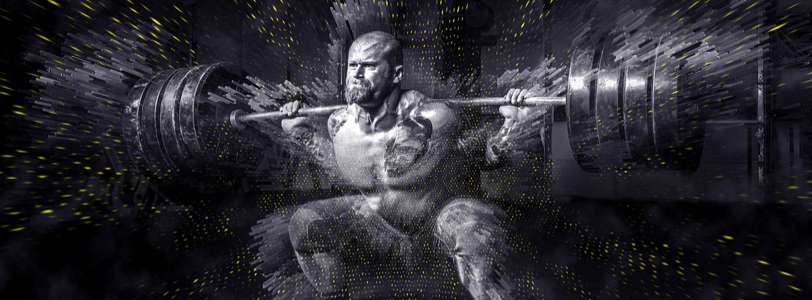
Dopamine is another powerful brain chemical that is mimicked by DMAA. When you intake a DMAA pre-workout, this super-strong hormone increases your attention, mood, and motivation. Also, it increases your level of arousal and goal-directed behavior. In workout terms - you get extremely motivated to do endless pumps.
Generally, dopamine is created in different parts of your brain. When it is released in your body, it boosts you to take action. That’s what makes you unstoppable - you just want more and more muscle pumps - more than you think is enough.
So, two hours pass in the gym, but you still feel like you could do more. Forget about crashing out!
Dopamine drives you to work out like crazy because you feel great and you’re anticipating the reward - feeling super strong and having an awesome body.
As I’ve already mentioned dopamine is a neurotransmitter - a chemical that is released by neurons to send signals to other nerve cells. The brain has two different dopamine pathways - one is the motivation for rewards anticipation. So when you are expecting a reward, the level of dopamine rises in your brain. The other pathway is involved in motor control for example movement.
Since dopamine is the simplest when it comes to molecule structure, it is in the same family as epinephrine and norepinephrine.
One important fact for you - it is broken down by a set of enzymes, one of which is a monoamine oxidase (MAO). But DMAA stops this because it acts as an MAO inhibitor!
So, when you take DMAA it mimics the effects of dopamine, meaning that your mood lifts, you get highly motivated to do your bench exercises and you work out like an unstoppable machine!
#5. DMAA enhances your brain!
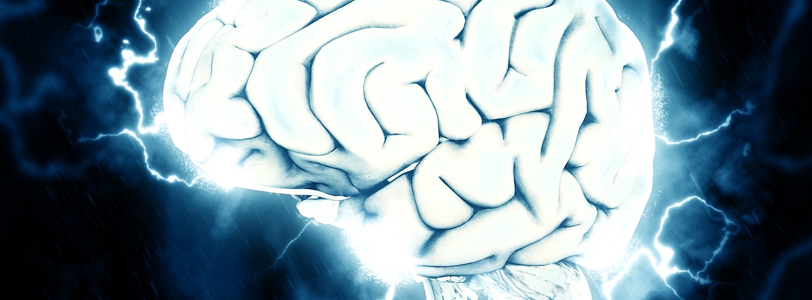
When you take DMAA it enhances your cognitive function because it affects the central nervous system. It improves your learning capacities.
DMAA as a nootropic or colloquially called smart drug, improves your executive functions, memory, motivation, and creativity, as long as you are a healthy individual without any previous health issues.
So, DMAA enhances your cognitive abilities, or brain skills and you learn better, manipulate the information more easily, solve problems faster, remember better and pay greater attention to details. DMAA improves your perception, memory, attention, decision making, and learning.
When it comes to executive functions they are referred to as executive functions and they represent a set of cognitive processes that you need for the cognitive control of behavior. So, DMAA helps you to behave in a way that you accomplish your set goals.
DMAA enhances executive processes such as attention control, inhibitory control, working memory, and cognitive flexibility.
When it comes to motivation, DMAA boosts you to take action, and seek satisfaction. It drives you to move forward.
#6. There are systematic reviews that prove that 1,3-DMAA enhances cognition

This research included using low doses of DMAA stimulant and it boosted mental performances. DMAA as a stimulant contains cognition-enhancing effects and it behaves as a direct agonist or indirect agonist of dopamine receptor D1. This receptor is found in the prefrontal cortex.
This brain region serves as a conductor of your executive functions like planning, decision-making, personality expressions, and social behavior. This region influences your thoughts and actions aimed at accomplishing your internal goals.
These systematic reviews showed that the low dosage of DMAA boosts cognitive functions such as episodic memory, working memory, and some aspects of attention. This all happens only if the individuals are perfectly healthy.
Working memory has a limited capacity and you are able to hold the information only temporarily. So improving this type of memory is important for reasoning and decision-making.
Memory consolidation is also improved with using DMAA which in turn improves information recollection. You are able to recollect data and information from your memory. In scientific terms - memory consolidation is a process of stabilizing memory after its initial acquisition.
Task saliency is an important part of your motivation to accomplish your goals. It represents motivation to perform a task. DMAA does not only boost this kind of motivation, but it also boosts performance and accomplishment of time-consuming tasks that require a high degree of effort.
Task saliency is a cognitive process that motivates you to go towards or away from a specific event, object or outcome. It pushes you to achieve your goal, to spend time and energy to do it, and it also shows how much risk you are willing to take while accomplishing that goal.
#7. DMAA intake doesn’t interfere with the normal body functions

After a meta-analysis, conducted in one study, the results showed that heart rate, body temperature, and blood pressure were unaffected by 1,3-DMAA intake.
Seven participants took part in this study. The analysis showed that the peak of DMAA was between 3-5 hours following oral intake. The terminal half-life was 9 hours. Lag time, or the moment when DMAA enters the circulation and it is administered extravascularly, varied among participants but on average it was 8 minutes.
This analysis showed that you can use DMAA 30 minutes before you need to study hard, or you have planned a strenuous exercise. Use it at any time you need a quick shot of intense energy.
Students have the best results of using DMAA as a nootropic. In one study 35% of college students claim to use stimulants for enhancement of academic performance rather than as a recreational drug.
I must point out here that in order to use these stimulants you must be healthy. That’s an imperative!
#8. There is the right dosage of 1,3-DMAA
Most supplements that contain DMAA range between 25 and 30mg per serving.
This was concluded in research that observed the effects of DMAA. The participants took a dosage of 25 mg. The results showed a low increase in heart rate, blood pressure, and temperature. This proves that 25 mg is a base dose.
The usual lower dosage is between 10 to 20 mg. Gradually it can rise between 40 to 60 mg.
If you are new to this potent stimulant, it is strongly advised to take half a serving of whichever DMAA pre-workout you are starting to use. First, test your reaction to this strong stim. Just remember that DMAA quickly builds up in your body so to avoid this use DMAA supplements only 2-3 times a week. This way you will continue to get the same focus, energy, and euphoria and you won’t need to continually increase the dose.
Make sure you give your body enough time to process DMAA, in order to avoid serious side effects like high blood pressure.
If you are already used to hardcore stims then try some pre-workout supplements that contain 60 mg of DMAA. You should take the recommended dosage half an hour before your planned strenuous workout. Take it once a day, 2 or 3 times a week. It’s not recommended to take it more than that.
In order to be sure that you are taking the exact dosage, use a milligram scale. Never measure the dosage on your own, without a scale.
#9. 20mg to 50 mg of DMAA is a safe dose.
Why is it safe? Because it doesn’t raise blood pressure significantly.
Of course, there was a study to assess the safety of DMAA dosages. You can check the research and the results below.
50 young men, 50 HEALTHY young men took part in this research. The research lasted for 12 weeks, and it included the intake of DMAA alone, together with caffeine, placebo, and caffeine alone. The dosage of DMAA was 50mg a day, caffeine 250 mg a day, the combo of caffeine 250mg, and DMAA 50 mg a day. So, there were 4 groups of participants.
Before and after 6 and 12 weeks of the testing, the following variables were measured: body mass, blood pressure, respiratory rate, 12-lead ECG, urine, complete blood count, oxidative stress, metabolic panel, lipid panel, inflammatory and cardiac biomarkers.
The results showed that there was little or no change in any of the four tested groups. A small change in heart rate was seen for the group that took DMAA alone, and a small change in respiratory rate for the group that took caffeine with DMAA.
So, there you have it. Keep the dose of DMAA between 20 to 50 mg and you are good to go and start your hardcore workout.
#10. The dosage of DMAA was considered by physicians and pharmacist
Why is this important? Well, because two vital components must be checked when it comes to using this supplement - the safe dose, and the frequency of dosing. Let’s discuss this in more detail.
You will get the desired outcome only if you use the safe dose and safe frequency of DMAA. Anything above the safe dose can lead to adverse outcomes. Who in the right mind would want that to happen? When we talk about DMAA, most supplements include approximately 25mg of this ingredient per serving. Why is this a safe dose? Because it doesn’t increase the blood pressure. When you intake 50mg of DMAA your blood pressure increases to 7 mmHg, and to 16 mmHg if you intake 75mg. So, in case reports that noted significant adverse outcomes from DMAA ingestion, the used dosage was far greater than what was recommended by the manufacturer or tolerated by human consumption. In certain individual cases, there was a consumption of DMAA more than 15 times the recommended dose. These individuals might have ingested 375 mg of DMAA, together with other supplements. THIS IS DEFINITELY FORBIDDEN! To intake so high a dosage is extremely unwise and it should be discouraged.
Let me put it simply. Imagine taking 3,750 mg of caffeine in the morning instead of the usual 250 mg. Or drinking 15 to 20 glasses of wine at dinner as opposed to one or two glasses, that are tolerated. Huge difference - don’t you think?
Or think about a cardiologist who prescribed 375mg of Atenolol to his patient instead of a typical dose of 25mg of this beta-blocker. I think that I don’t need to mention that the results would be devastating!
So, again if you are completely healthy without any previous medical condition, keep DMAA at the safe dose - don’t overuse it!
#11. Proper dosage of DMAA is SAFE!

Even though there was a lot of misinformation and skepticism around the safety of this powerful supplement, if you stick to the safe dose, and you are completely healthy you shouldn’t experience any adverse side effects. So, if you take the recommended dosage you can really expect a lot from this supplement.
First, it has the ability to cross quickly through your blood and to your brain, which makes it bioavailable in no time. Since it has a long half-life, it will provide you with energy for the entire day.
As I’ve already mentioned DMAA stimulates the central nervous system and gives you a fast spike of energy similar to the effects that you experience with caffeine, adrenaline, or ephedrine.
Even though DMAA has been scrutinized, and it evoked a lot of misunderstandings, one thing is certain - it really works.
The experienced bodybuilders claim that this potent supplement has given them the best training sessions ever. They could lift weights with such intensity that they were shocked. Also, their focus was so intense on sets and reps, that they didn’t notice anything else around them.
It’s effective - its reputation exceeds itself.
However, since it’s so extremely potent it is not recommended for beginner lifters. If you really want to try it out, make sure that you stick to the starting dose of 10 to 20 mg and check your tolerance first. One more thing - you must be completely healthy, without previous medical conditions to start with this strong stimulant.
#12. DMAA has a longer half-life than caffeine
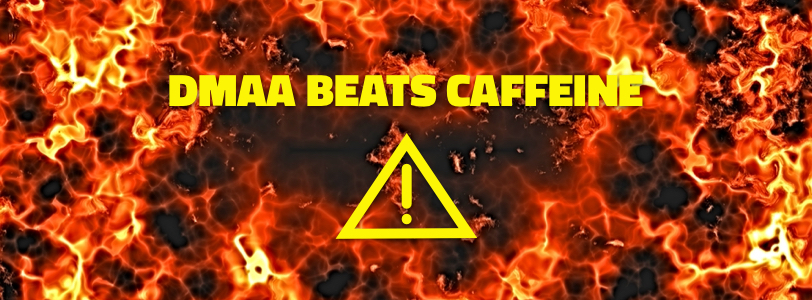
When we compare 1,3-DMAA to caffeine, which is another potent pre-workout stimulant, the first thing that makes a huge impact is that DMAA stays longer in your body.
The molecular formula of caffeine is C8H10N4O2, which means that it consists of carbon, nitrogen, and oxygen double bonds. That’s the reason why caffeine stays only for 4-6 hours in your body while DMAA stays between 7-9 hours.
DMAA has a longer half-life because of methyl substituent on the alpha carbon, and this specific atomic configuration interferes with monoamine oxidase. In other words, DMAA is a monoamine oxidase inhibitor (MAOIs), and it stops the breakdown of monoamine neurotransmitters and in turn enhances their availability.
So, when you intake DMAA, it interferes with the degrading of adrenaline, noradrenaline, and dopamine, which makes you be in the zone longer.
So, DMAA makes you rock harder and longer!
#13. DMAA fights your worst enemy - fat!

DMAA is praised as an effective appetite suppressant and central nervous system stimulant - it gives you a super boost of energy to fight against fat.
As mentioned before, DMAA stimulates the release of noradrenaline in your brain and it stimulates adrenergic receptor systems. This means that it increases noradrenaline in alpha and beta receptors in your body. Next, these receptors trigger the central nervous system because of a stressful situation or strenuous workout (in your case). So you get dilated pupils, mobilized energy, increased heart rate, and the blood is diverted into skeletal muscles - your physical performance is momentarily boosted.
All these actions build up your metabolic rate and increase the breakdown of fats from adipose tissue for energy. This process is called lipolysis.
Moreover, DMAA behaves as a vasoconstrictor, which means that it restricts blood flow and leads to increased metabolic rate and in the end fat burning and weight loss.
So, when you intake DMAA pre-workout, you feel a huge spike of energy, get focused and alert, and don’t feel hungry.
The fact is that you will get the best results if you use DMAA in cycles. DMAA has a tendency to build up in your body very quickly so increasing the dosage is not a smart idea. This way you will cause serious side effects. To avoid this, use it for 4-6 weeks and then quit using it for 4 weeks. In this period of abstinence your body will re-sanitize to DMAA effects and then you can start the new cycle.
The point is that losing fat isn’t an easy job. But with a controlled diet, intense training, and effective fat burner it is far more achievable.
So, next time you are in for using a powerful fat-burner - use DMAA!
#14. DMAA is an awesome thermogenic

It boosts your metabolism and increases fat burning. The word thermogenic means heat-producing. When you work out you burn calories and your body generates more heat, so DMAA is considered thermogenic because it hits your temperature.
All metabolic processes in animals and plants produce heat because they are reflected in thermodynamic inefficiency and because of that they are thermogenic. But, thermogenesis is generally used to describe the adaptive process of heat generation, for example in a process in which heat is the primary product of metabolism. This term is also used to describe heat production related to a meal.
Also, thermogenesis is related to generating heat in order to maintain body temperature. It is used in nutritional science for the description of adaptive production of heat-related to overeating, especially as a part of the regulation of the energy balance of the whole body.
So, this dissipation of energy through the heat productions appears in special tissues like brown adipose tissues and skeletal muscles.
There are some other popular thermogenic supplements like green tea, caffeine, and capsaicin. They can be used alone, just as one ingredient or they can be used together with other metabolism-boosting compounds. But, DMAA is on the top. It is effective, safe and it won’t contribute to any negative side effects if used properly, within the safe dosage.
The best time to take this powerful thermogenic is 30 to 60 minutes before you plan your intense workout. Boost your metabolism, and work out like crazy!
#15. DMAA has vasoconstrictor properties
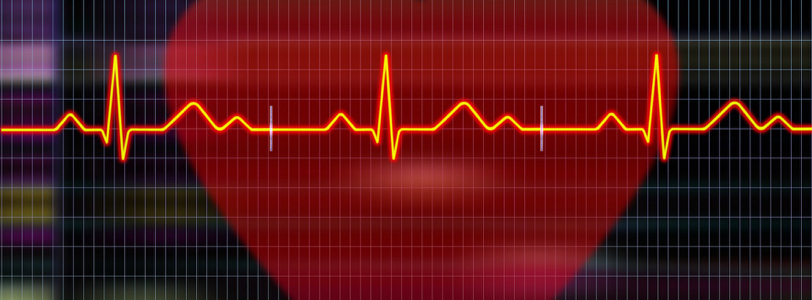
There was research that focused on the acute ingestion of DMAA. The results showed that it has vasoconstrictor properties, meaning that it increases blood pressure.
The effect that DMAA has on blood pressure depends on the dosage and when you intake 25 mg there is no change in mean blood pressure. When you take 50 mg there is a 7mmHg mean increase, and when you take 75 mg there is a 16 mmHg mean increase. There is also a mean increase in systolic blood pressure of 14 mmHg when you take 50 mg of DMAA and 250 mg caffeine. When we talk about this, think about the increase in blood pressure with caffeine. 80% of the world's population consumes caffeine every day. In America, grown-ups drink on average 4 mg per kg of body weight of caffeine each day. This is actually 280mg for 70 kg respectively.
It is estimated that a safe quantity of caffeine consumption is 400 mg a day, which is about cups of coffee.
When you ingest caffeine acutely, it elevates both diastolic and systolic blood pressure, in a dose-dependent manner. This lasts for 3 or 4 hours. For instance, there is a 4 mmHg increase in both systolic and diastolic pressure when you intake 80 mg caffeine.
If healthy men and women ingest 250 mg caffeine there is an elevation in systolic and diastolic blood pressure of 14 mmHg. After a review and meta-analysis, it was concluded that ingestion of 200-300 mg of caffeine increases systolic blood pressure to 8 mmHg, and diastolic pressure to 5.7 mmHg.
So, the point is that DMAA dosage of 50mg increases mean blood pressure as does caffeine at 250mg.
DMAA is stronger than caffeine, as a stand-alone ingredient. If you are planning to have a heavy pump day, intake of 50 mg of DMAA will be more than enough to provide you with extra long-lasting energy, laser focus, and massive strength. Your workout in the gym will never be the same and you will feel the benefits of DMAA in a short period of time after ingestion. Two hours will pass and you will still feel full of energy.
#16. You can buy DMAA in bulk

This fact gives you the opportunity to make any pre-workout supplement into a DMAA one.
With pure DMAA, you can enhance your pre-workout and make it more potent.
In order to be as precise as possible use a milligram scale, to add the correct dosage of DMAA in your pre-workout supplement. Don’t rely so much on the scoop, scales are much more precise, and remember - don’t make your potent pre-workout without proper measures.
Regarding the dosage of DMAA, you can take between 20 to 75mg. This dosage keeps you safe from elevating blood pressure. You will feel the effects after approximately 60 minutes after intake.
The half-life is 4 hours, meaning that’s how long you will feel an increase of energy, stimulation, motivation, and clear mind while you’re doing your hardcore pumps.
It’s a good idea to buy DMAA in bulk because you can store it for a long time or turn any pre-workout supplement into an exotic one.
Don’t forget - experimenting with DMAA means doing it with the safe dose and always using a milligram scale. Don’t eye out the serving!
#17. DMAA is a super effective ingredient in many PWOs
A lot of hard-core bodybuilders use supplements that contain DMAA because it’s a potent nervous system stimulant, and it is awesome as a PWO supplement.
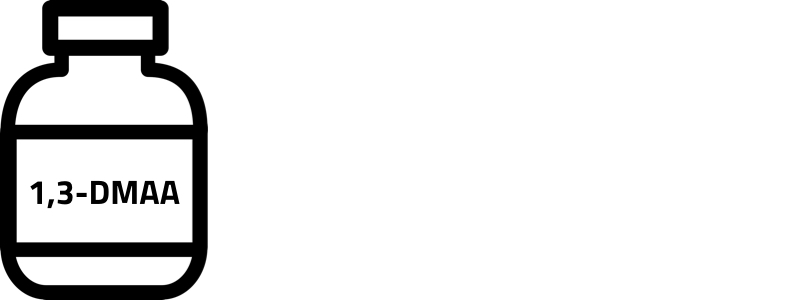
Let’s find out how you can benefit from PWO supplements.
First of all pre-workout supplements come in all shapes and sizes- tablets, capsules, powders, liquids, and bars. Aside from caffeine, DMAA is widely used as a pre-workout supplement because it increases your alertness, strength, and concentration. DMAA is put as an addition to caffeine because it also minimizes fatigue.
PWOs are easily absorbed, they advance muscle recovery and muscle growth. They are used to enhance your physical performance and energy. They are perhaps limited to gym-goers who are extremely experienced and whose goal is to get super muscular.
When you have over-strenuous training, you burn out your energy and feel exhausted. Even professional athletes and people who train in the gym regularly sometimes have problems finishing the whole training. We have limited energy reserves so normally we sometimes need to cut out training short. But, the solution is PWOs. They were made to keep our energy on a high level, give us a boost and slow down getting tired. They improve endurance, enhance overall performance and give you better results like fast muscle formation and building stamina.
You don’t need to buy PWOs as a pre-packed supplement. You can make one yourself. You just have to be really really careful not to go overboard with dosage especially when using DMAA. Always use a measuring scale.
PWOs can have different ingredients. Some contain L-arginine which is used for the production of Nitric oxide. We produce Nitric oxide naturally in our bodies. It boosts the blood flow and enables better performance while training. Many also contain caffeine which supplies your body with energy and helps fat burn. Some also contain creatine. It enhances the training routine and improves endurance. It also delays the feeling of fatigue and increases strength.
This brings us again to DMAA. It is very popular and often found in PWOs. How will you benefit from it? Well, it is a potent neurotransmitter and has a thermogenic feature. It has similar effects to caffeine but it is much stronger - it gives you a super energy rush and boosts your performance at the gym. DMAA actually gets to the central nervous system and blocks noradrenaline reuptake. Also, it triggers dopamine which boosts your feeling of self-confidence.
It belongs to the group of monoamines and it inhibits the reuptake of catecholamines. Monoamines block protein transportation and boost the number of neurotransmitters outside the cells. That’s why your energy increases, your endurance improves, and you get laser focus.
DMAA can be taken alone or together with other ingredients. Just pay attention to the dose, and never go overboard.
If you decide to take it with L-citrulline or citrulline malate, always pay attention to take the right dosage. Keep the recommended dosage of DMAA (35-50 mg) in mind.
With citrulline malate, you will get all the benefits if you combine it with 6-8 grams about an hour before the workout, without using a loading phase.
Apart from having a direct impact on burning fat, DMAA increases energy levels and supports caloric expenditure.
You will get the best results when you take this into account - don’t take DMAA supplements every day! Use it 2 or 3 times a week max, and plan to have a push day- it will hit you hard and you will have an epic workout!
Also as DMAA tends to build up really quickly in your body if you use it every day-you could seriously damage your health and experience adverse side effects.
Don’t do cardio on the day when you take DMAA it will just jag up your blood pressure, and you will get no real results.
But if you are doing benches, that’s another story - expect to get intense energy, intense focus, and tunnel vision!
#18. PWO Aventador contains 1,3-DMAA

This seriously potent pre-workout supplement contains DMAA. It also has stimulants like caffeine, N-Methyltyramine HCL, and synephrine. They are all super hardcore stimulants.
DMAA, together with all these stimulants seriously sparks up your central nervous system, raises your heart rate, and pumps you up for your workout.
This PWO also contains some nitric oxide boosters like agmatine citrulline and taurine for maximal vasodilation. Vasodilation is super important for doing pumps because it widens your blood vessels and relaxes smooth muscle cells in the vessel walls of large veins and large arteries.
Aventador also has several nitric oxide boosters like agmatine citrulline and a huge dose of taurine for max vasodilation. Now, vasodilation means that your blood vessels are widening as a result of the relaxation of smooth muscle cells in the vessel walls, of large veins, and large arteries. This is super important for doing the hardcore workout.
Its key performance enhancers and stimulants include:
380mg N-Methyl D-Aspartic Acid, 100mg Tribulus, 10mg Noopept, 300mg CDP Choline, 3g Beta-Alanine, 1g Agmatine, 1.5g Arginine, 1g Citrulline Malate, 1g Creatine HCL, 2g Taurine, 400mg Caffeine, 100mg DMAA, 50mg DMHA, 60mg Synephrine, 75mg Methyl Tyramine
DMAA (100 mg) - DMAA is a stimulant that provides focus, energy and euphoria. It is known to increase concentrations of the neurotransmitters dopamine and adrenaline. The dose of 100 mg is super. Be cautious! More usually the dose varies between 45 mg and 65 mg.
N-Methyl-D-Aspartic Acid (380 mg) - It is an amino acid that imitates the activity of glutamate. It is an agonist for the NMDA receptor. NMDA is advertised as a muscle mass enhancer, although it doesn’t increase muscle growth while resistance training.
Tribulus (150 mg) - It is a herb that reduces blood pressure. It doesn’t produce testosterone. 1,3,7 Trimethylxanthine (400 mg) - It is caffeine anhydrous. 400 mg is a solid dose of caffeine.
DMHA (50 mg) - It is a stimulant as well. It is similar to DMAA. It boosts energy, motivation, and euphoric effects. It also triggers neurotransmitters like epinephrine and dopamine. 50 mg is a relatively small dosage for a pre-workout, which usually has between 150 mg and 250 mg when DMAA is included.
N-Methyl Tyramine (75 mg) - It is a stimulant, typically included at a dosage of around 200 mg in supplements.
Advantra-Z (Synephrine) (60 mg) - It is a stimulant, also popular as bitter orange extract. 60 mg is a solid dosage of synephrine.
Noopept (10 mg) - It is a synthetic nootropic. It is an ingredient that boosts cognitive functions and has psychostimulatory effects. 10 mg is a somewhat light dose. Many supplements include 20 mg to 30 mg of this ingredient.
CDP Choline (300 mg) - it is a cognition enhancer, though it has only been studied to a limited extent. Usually the dose is between 250 mg and 500 mg range can increase attention so the dose of 300 mg is surely an effective dose in this pre-workout.
Beta-Alanine (3 g) - When people use it regularly they increase power output. That means it must be taken every day, not just with a pre-workout. However, 3 grams is a solid dosage. Ranging from 3 grams to 4 grams is a clinical dosage. So this PWO is within the range with this ingredient.
Agmatine Sulfate (1 g) - One gram of this ingredient is a good dosage for boosting nitric oxide in the bloodstream, which in turn helps with pumps.
L-Arginine (1,500 mg) - This ingredient is required to create nitric oxide in the body, but interestingly it has performed unreliably in studies when measuring blood flow increases. This is thought to happen because of the poorer bioavailability of L-Arginine as opposed to other supplements like L-Citrulline. This supplement is turned into arginine in the kidneys.
Citrulline Malate (1,000 mg) - It is included as a pump and power ingredient. It helps to improve endurance, reduce fatigue, and boost the production of nitric oxide. 1 gram is much much lower than the recommended dose. The recommended dose is somewhere between 6 and 8 grams. This is really odd because most pre-workouts don’t go below 5 grams of this ingredient.
Creatine HCL (1,000 mg) - It has a high bioavailability, higher than creatine monohydrate (it is absorbed more easily by the body), so you need to take less of it to get similar effects. The same as creatine monohydrate, creatine HCL helps your body to create more ATP. This allows the muscles to create more power output. The clinical dose of this ingredient is 1 gram. It should be taken every day in order to be effective, so you can take it separately.
Taurine (2,000 mg) - It is also the key ingredient of Red Bull. It affects your body in different ways. It is kind of a “diverse” ingredient with a range of potential, physical benefits. It can reduce the feeling of cramps. It can boost blood flow. Also, it acts as an enhancer of the antioxidant defense system. The dose of 2 grams is pretty solid. So it definitely provides the effects as described.
Niacin (60 mg) - It also goes under the name of vitamin B-3. It has a wide range of benefits like boosting HDL cholesterol (the “good” cholesterol) concentrations, lowering LDL cholesterol concentrations, and lowering the concentration of triglycerides. Some studies show that it can boost blood flow.
Anti Crash Matrix (1,800 mg) - The anti-crash matrix consists of vitamin C, L-Dopa, vitamin B-6, Niacin, Vitamin B-1, Vitamin B-2, Pantothenic Acid, Vitamin B-12, and Folic Acid.
This supplement will hit you hard, so stay alert if you are a beginner.
#19. PWO Crack includes 1,3-DMAA

This pre-workout supplement contains DMAA and it’s super potent.
It increases your muscles and helps definition. It provides you more speed, power, and endurance. Your energy and motivation are supercharged. You get to do insane muscle pumps.
You feel explosive strength and that laser focus that helps you work out like crazy.
This supplement is a great choice if you are focused on the last two elements while working out.
It is definitely not for beginners but for people who have already used DMAA in their PWO supplements. It hits hard but it gives you a burst of energy and hits on pumps with insane laser focus.
This product is super popular and never stays on the shelves for a long time. This proves that it's effective.
With this supplement, that contains DMAA, every training session will be different. If you are in the mood of lifting weights you will be unstoppable! DMAA as an ingredient in this product blocks the reuptake of noradrenaline. The concentration of this hormone increases and stimulates your neural activity. You feel euphoric and aroused, and those are the effects of DMAA. While doing your hardcore heavy weight lifting you may actually be able to do it with one hand.
Its key ingredients are 120 mg of DMAA, 400 mg of Caffeine, and 15 mg of Grains of Paradise.
#20. Herolean contains 1,3-DMAA

It is an awesome fat burner, but it can also work as a pre-workout. It is the ultimate thermogenic fat burner. It enhances your metabolism and increases the process of fat burning. When you work out you burn calories and your body generates more heat, so this product is considered thermogenic because it increases your temperature.
Also, it lifts your mood. When you take this supplement you actually feel, not angry or annoyed, as other fat burners might make you feel.
This product hits you hard. It is a huge appetite suppressant. It gives you long-lasting energy, super boosted mood, and thermogenesis, and - it contains DMAA.
If you are a beginner, avoid it. It would be challenging to handle so much heat.
Its key ingredients are 100 mg of DMAA, 200 mg of DMHA, 300 mg of Raspberry Ketones, and 250 mg of Eria Jarensis.
Let’s talk about the ingredients more:
Caffeine Anhydrous - It is another name for caffeine, Caffeine Anhydrous gives you an energy boost that keeps you in a good mood while burning fat. 300 mg is a middle dosage, not too high and not too low.
Raspberry Ketones (300mg) - This should not come as a surprise to anyone who knows about fat burners. They are famous for breaking down the fat within cells, which in turn speeds up the whole fat-burning process.
Green Coffee Bean Extract (150mg) - This ingredient is a true gem when we talk about fat burners. Like Olive Leaf Extract, it has caffeine which is a popular weight-loss stimulant.
Eria Jarensis Extract - It is here because it lifts your mood. This fact is something that makes Herolean a different fat burner. It really elevates your mood up to feeling euphoria.
2-Aminoisoheptane - It is also known as DMHA. It is an efficient stimulant and a usual ingredient in fat burners. Combined with DMAA it really hits hard.
Synephrine HCL - It is also a usual fat burner ingredient. It is helpful with appetite control. So, along with other ingredients and their effects, this one prevents you from eating.
Hordenine (50mg) - This ingredient is super strong, and it doesn’t appear so often. It is used as an energizer and fat-burning ingredient.
Yohimbine HCL (10 mg) - This ingredient is a universal performance enhancer. It actually grows on trees in Western and Central Africa. It also helps with fat burning.
Once more, if you can stand the heat, supplement will work great for you.
#21. One of the cheapest Pre Workout that contains 1,3-DMAA is Irate Extreme

It is an original formula, it gives you crazy insane pumps, explosive energy, and maximum performance. It is super potent!
If you are a stim junkie you will definitely appreciate this PWO. It is packed with exotic ingredients and it delivers focus, energy, and a feeling of intensity.
The awesome thing about it is that it doesn’t create an unwanted crash after the workout.
When you take one scoop of it, you start feeling energy and euphoria after about 30 minutes. If you are a beginner take half a scoop first. The feeling of becoming energetic increases gradually, and you feel its peak after 1 hour approximately. Energy, focus, and drive are there for more than 2 hours. After the workout, there is no crash.
Its key ingredients, besides DMAA, are:
Citrulline malate (5g) - it helps you with pumps and blood flow, and a small dosage does the trick. Never go over 5g, it’s enough to balance the rest of the ingredients.
Yohimbine HCL (2.5 mg) - it behaves as a stimulant, increases adrenaline levels, enhances fat loss, and pumps. Try it out slowly first because some users say it produces cold sweats and anxiety. Take half a scoop first to see how your body reacts, and how tolerant you are.
Beta-Alanine (2.5 g) - it gives you that tingly feeling. It can increase lactic acid buffering which helps with endurance. You get a huge power output. Just stay alert for tingles and if you are fine with them, add them to your regular routine.
Creatine HCL - it increases the synthesis of ATP in your body, which helps you with power output when you use it regularly. It’s great that it is a PWO, but you need to take it every day to actually notice the enhancements this ingredient provides.
Caffeine citrate (150 mg) - it acts fast but it also wears off quickly.
Caffeine anhydrous (150 mg) - it helps boost your energy, improve your mood, and increases focus.
This PWO is definitely more powerful than an average pre-workout. Some lifters avoid it because of feelings of anxiety and jitters. Most report that it is hardcore.
#22. ELECTRO pre-workout contains 1,3-DMAA

If you have tried 1’3 Volt and Shockwave, Electro will feel very similar. Electro gives you more focus and a huge wave of energy and mood.
Let’s discuss the effects.
It benefits you in so many ways. It gives you smooth energy, increased motivation, mood elevation, but nothing too much.
When you take a full serving, the effects come quite smoothly, but the biggest one is that you don’t feel tired anymore. You don't feel intense, and your energy gets gradually increased as well as your motivation and focus. When you start your workout, you easily move from one exercise to another and you keep your focus.
When we regard mood enhancement, you don’t feel tired and you feel happy to work out. Nothing too aggressive. These effects last long, four to five hours and you still feel the energy after the workout.
Electro has a high stim and it gets you super focused.
Regarding scoop size, a full serving is 12g.
Let’s cover the ingredients.
1,3-DMAA (150mg) - Of course, there is DMAA - the best stim for increasing performance. It boosts dopamine production and increases blood pressure. It mimics adrenaline - it makes you super strong. It triggers the `` fight or flight” reaction, because it mimics adrenaline, as does any other stimulant. It increases body temperature and boosts fat breakdown. But, the dose is high here. It has 75mg of 1,3 DMAA and 75mg 1,4 DMAA. The dose of 150mg DMAA will cause a thermogenic state, but it could be excessive if you are a beginner. If you take half a scoop you will get 75mg of DMAA, which is what is generally recommended as a max dosage.
Citrulline Malate (6.8g) - This ingredient is found in almost every pre-workout because it is one of the best for boosting pumps and performance. It changes into arginine and used by nitric oxide synthase, an enzyme that creates nitric oxidase. It boosts vasodilation because it increases the width of blood vessels. This way more pumps and more nutrients are sent to muscles. When you get more blood it helps you not to feel the burn from multiple reps. It actually removes the lactic acid that builds up after a huge number of repetitions. It also lowers blood pressure, reduces workout pain, and boosts performance.
Beta-Alanine (3.2g) - This ingredient is responsible for tingles. But at this dosage, they are almost unnoticeable. It is naturally found in skeletal muscles and is an amino acid that produces carnosine. It removes the ammonia that tends to build up after numerous reps. This ensures more endurance for muscles. It should be taken separately every day, which also makes the tingles less noticeable.
Caffeine (450mg) - Almost every pre-workout has this stim. It is one of the most researched stimulants. Here we have two different forms of caffeine - caffeine anhydrous and caffeine malate. The first one acts super fast and hits you instantly, while the other one is slower and takes more time to digest. With these two forms, you will get long-lasting energy. Caffeine malate also helps with avoiding the feeling of the crash after the workout.
L-Theanine (150mg) - It is an amino acid that naturally occurs in your body and it can lower the increased anxiety and jitter coming from stims. It doesn’t cause drowsiness but makes you feel calm and relaxed. Relaxation means a stronger mind connection to muscles. Some studies show that theanine combined with caffeine can improve cognitive functions. So, it provides better reaction speed, processing speed, and staying alert.
Noopept (30mg) - It is a commonly used nootropic. It should reduce anxiety and inflammation, and at the same time improve blood flow. It is usually used to help with long-term memory.
Black Pepper Extract (5mg) - This ingredient is used to boost all the others. It helps enhance the bioavailability of the other ingredients. All in, all it maximizes the absorption of all the stims included.
So, you can see for yourself that Electro is super strong and definitely not for beginners.
#23. Mesomorph V4 contains 1,3-DMAA

The effects of Mesomorph V4 are numerous. It is one of the best pre-training supplements. It increases concentration, makes the building muscle mass faster, and boosts your energy. It increases training endurance and strength. It boosts the building of an athletic figure. Both men and women can use it. It gives excellent training support because it contains mood-enhancing ingredients. It has a perfectly balanced set of stimulants, ingredients that boost strength, and nitric oxide boosters.
Since it is full of 3 blends of ingredients, it gives you unlimited energy, boosts vascularity and strength and it lowers fatigue. If you are an advanced lifter and can tolerate strong stimulants very well it is intended for you. It has ingredients with a thermogenic effect which helps fat loss, but without affecting muscles.
So, again the most important effects are high energy, high euphoria, and good mood, high adrenaline rush, clear focus, faster anabolism, no muscle catabolism, and better sports performance.
So, Mesomorph V4 is really a potent pre-workout and has a stimulating effect. It increases the level of adrenaline, training aggression, and boosts the lipolysis process. It also synthesizes nitric oxide. Since it includes DMAA it is definitely appealing to hardcore bodybuilders.
When you try it for the first time, make sure to take just half a scoop. Pay attention to your body and how it reacts to this powerful stimulant.
#24. DMAA guaranties strike on muscles

If you are a fitness enthusiast or bodybuilder you will greatly benefit from DMAA. How? Find out below.
Since it is highly potent, it dramatically boosts performance and exercise capacity. It makes you stronger. DMAA works great as a pre-workout supplement because it increases muscle tolerance. It acts as an adenosine receptor antagonist - it lowers overall muscle pain. Also super important - it lowers muscle recovery time for kick-ass results.
DMAA as a pre-workout prepares your body for a super focused workout session. So, it boosts your fitness performance. You work out like crazy, for more than two hours. You feel super strong as if you could lift mountains.
After the workout you feel great - not crashed out.
So, take DMAA half an hour before your planned hardcore workout in the gym. You will get the best results and avoid getting dose-dependent, if you take 2 to 3 times a week, and not every day. Also, avoid it on days when you plan to do cardio exercises.
#25. DMAA can be found in Geranium plants

Before this was concluded, there was a lot of inconsistent evidence about the natural existence of DMAA in some species of geranium plants. The reason for this was because there were differences in the sources where the species were taken, extraction procedures, and the ways the species were analyzed.
However, some studies detected 1,3-DMAA from some plant material. The source was in China, and the concentration of DMAA was lower than 500ppb.
Let’s discuss this in more detail.
In one research, scientists were able to detect DMAA in geranium plant tissues, and in geranium oil samples. The geranium plants were harvested in three areas in China. A method called HPLC-ESI-QQQ was used for the determination of DMAA. The extraction involved a single hexane extraction. This was great because this method lowers the potential losses. Geranium oils were mixed with hexane and shaken fast for 5 minutes.
For the separation of the DMAA, it was used a C18 column and an 85/15 water/acetonitrile mobile phase where the water phase contained 0.1 % formic acid. The detection was done by MRM of the m/z 116 to 57 and m/z 116 to 99 transitions, which corresponded to the loss of hydrocarbon fragments.
In the end, the results were gathered in two different laboratories and they were similar. In both laboratories, subsamples from the same plant material were analyzed, with the help of a similar method that provided evidence for the existence of 1,3-DMAA in particular species of geranium from China. This proves that 1,3-DMAA varies in appearance in different species and that different seasons might affect its presence as well.
Also, there are more than 200 different species of Pelargonium, so that’s the probable reason why some plant materials have DMAA and others don’t.
#26. You can Buy 1,3-DMAA online
One of the best and most cost-effective providers of this supplement is Chemical Exchange.

Want to find out more? Read about it below.
Chemical Exchange was one of the first to enter this market. They manage innovative research in metabolic, cognitive, and longevity science. They do it with the help of pharmacologically bioactive chemicals. Their goal is to make the research in neuroscience technology and cognitive science more accessible.
They provide resources like reagents and fine chemicals for individuals and institutions. Their products are super affordable and of course of high quality.
They have gathered a huge pile of experience during the years of study and they deliver the highest quality products at the best prices. Their customer service is on the highest level.
The company was founded in 2014. Their core values enable them to thrive through the industry’s top manufacturers. They have reached the top when it comes to customer satisfaction all over the globe. They are constantly improving their products and services. They research the market and bring new and awesome products to their customers.
So, you can purchase DMAA of the highest quality from this company. It is 99.6% pure and comes in the form of a powder. This product is verified and rest assured that it is of top quality.
It is sourced from the best origin and it is the best on the market. They guarantee you will be more than satisfied if you buy DMAA from them.
Due to the fact that you buy it as a powder, it remains stable for more than two years if you store it properly. If it clumps up a little it breaks up easily and it doesn’t use any of its efficiency.
#27. If you try 1,3-DMAA you will be more than satisfied with the results

If you are ready for a strenuous, hardcore workout, then this stim will work phenomenally for you. There are numerous ways it will enhance your performance. Let’s check them!
First, you will feel striking energy. DMAA stimulates the central nervous system and triggers epinephrine. When it enters your bloodstream DMAA stimulates CNS to signal adrenal glands on your kidneys to release epinephrine. The following happens: Your blood vessels contract, your blood pressure increases, and more blood and oxygen are transported to muscles and lungs. Stored glucose is released, and all of a sudden you feel super energetic, alert, focused, powerful. You feel no pain at all. All those experiences indicate that you will achieve your goal of having an awesome muscular body, and get super strong.
Once more, if you are in good physical health and have no previous medical issues, try 1,3-DMAA that is included in your pre-workout supplement. Pay attention to the recommended dose and never go beyond. This way you will be sure that you will experience no adverse side effects.
Bottom line?
Take at least a few of these facts into account, next time you want to buy an awesome workout stimulant.

